Michelin Latitude Tour HP vs Bridgestone Alenza AS Ultra
Both the Michelin Latitude Tour HP and the Bridgestone Alenza AS Ultra are part of the SUV Touring All-Season category, tailored for drivers of crossovers, SUVs, and pickup trucks aiming for a comfortable and confident all-season driving experience. Let’s find a better fitting tire here, for your needs.
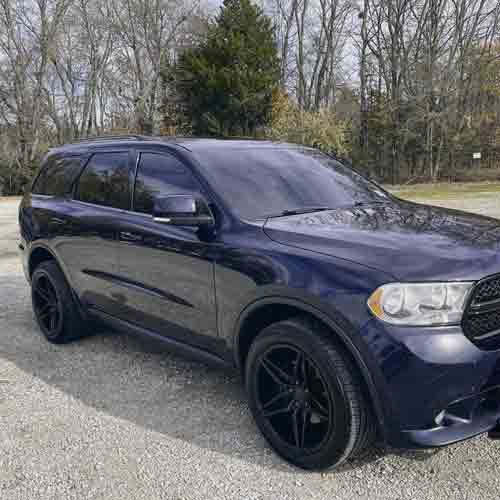
Table of Contents

Main Highlights
So overall, the Michelin Latitude Tour HP is better at:
- Dry-Road Braking: Demonstrating superior stopping power with its continuous central ribs and enhanced grip.
- Overall Handling: Providing better lateral grip and steering responsiveness due to its stiffer rubber composition and internal construction.
- Handling Road Vibrations: Offering a smoother ride by effectively managing smaller road imperfections.
Review this tire in greater details : https://tiredriver.com/michelin-latitude-tour-hp-review/
On the flip side, the Bridgestone Alenza AS Ultra takes the lead in:
- Wet-Road Performance: Excelling in wet traction and hydroplaning resistance with its denser siping and interconnected grooves.
- Performance on Ice: Outperforming in icy conditions with its advanced siping and groove design for better grip.
- Noise Reduction and Comfort: Providing a quieter and more comfortable ride with QUIETTRACK technology and a more flexible structure.
Review this tire in greater details : https://tiredriver.com/bridgestone-alenza-as-ultra-review/
Tread Features
The Michelin Latitude Tour HP rolls out with a symmetric tread design, flaunting five ribs.
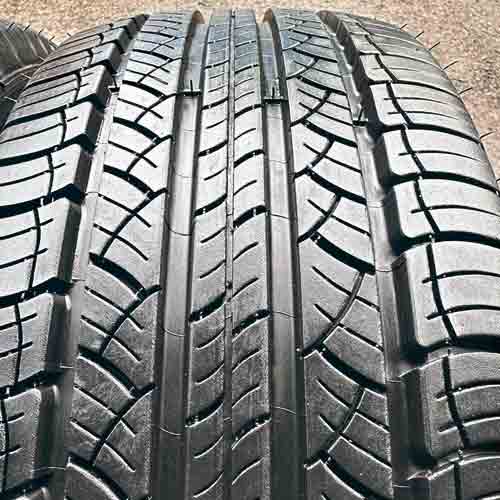
Now, here, while these ribs share some similarities in their tread features, there are subtle but important differences as well.
Take the central rib, for instance…
It runs continuously with offset edges, creating robust circumferential grooves on both sides.
And the ribs next to it feature interlinked in-groove notches, cleverly connecting the outer longitudinal channels.
Moving towards shoulders, here lugs are interconnected with each other longitudinally, by ridges.
And all blocks carry curved lateral and longitudinal slits, which act as sipes for wet traction, and biters on dry roads.
An yes, worth reminding, all of the these ribs (including the central one), have reinforced foundations underneath. They are actually sitting on a relatively harder secondary rubber layer, adding to the tire’s stability and handling.
Moving towards, the Alenza AS Ultra, this tire also features a similar 5 rib symmetric tread pattern, though its relatively more “open”, or spacious.
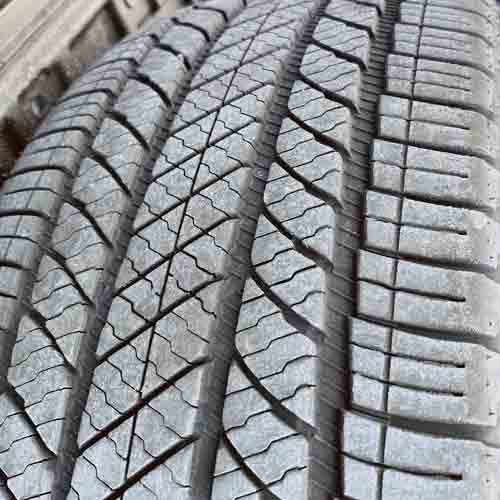
It’s central most rib comes with a very wide structure, where blocks features chamfered edges, and a lot of wave-like siping.
Moreover, there’s also a longitudinal slit dividing the rib in half.
The adjacent ribs are relatively more spacious, and come with thicker lateral voids, with off-set edges.
Together all these 3 ribs (in the middle) form 4 circumferential channels, which have a pattern on their own.
This secondary tread pattern (sitting on the base), basically improves the tire’s noise dampening abilities.
Lastly, the outer shoulder blocks are pretty straightforward. They form curved lateral voids and are equipped with linear sipes running horizontally and vertically, ensuring a stable and smooth ride.
A little tip from me to you : My main all-season tire page is the starting line for your tire-shopping success. At least that’s what my regular site visitors say.
Info on Sizes
The Bridgestone Alenza AS Ultra comes in 16 to 21 inches rims, with total of 49 sizes having following specs.
- Speed ratings: H, V and W.
- Load ratings: SL, XL.
- Weight range: 24 to 42 lbs.
- Tread depth: 10/32″ (or 8mm) on all.
- UTQG: 680 A A.
- Treadwear warranty: 80k miles.
- Internally, the tire comes with 2 ply polyester, 2 steel belts, with single nylon cap ply on top.
The Michelin Latitude Tour HP comes in 16 to 22 inches rims, and they have the following specs.
- Speed ratings: H, V, W, and Y.
- Load ratings: SL and XL.
- Tread depth range: 9 to 10/32″.
- Weight range: 27 to 43 lbs.
- Treadwear warranty: 55k miles for H and V rated sizes, and 45k for W, and Y speed rated ones.
- UTQG rating: 440 A B.
- Internally, the tire comes with a single-ply polyester casing, flanked by two steel belts and a nylon cap ply.
Wear Resistance
For a tire to excel in tread lifespan, it needs a combination of durable construction and advanced design features. Stiffer rubber is often used in such tires to resist wear while providing consistent grip in various conditions.
And here’s where the Alenza stands out notably, which is not a surprise, since it offers a 80k miles treadwear warranty.
So what makes this tire better? Well this is mainly because of its relatively lighter structure, (even though it features more plies in its internal construction).
This lighter weight means less pressure is exerted on the tire lugs during road contact, which helps in extending the tire’s tread life.
On the other hand, the Michelin Latitude Tour “HP”, being a high-performance SUV grand touring tire, although offers greater grip, it comes at the cost of greater rolling resistance, which not only lowers down its tread longevity but also fuel economy.
For Your Info : For those interested in Michelin’s offerings, it’s worth looking at the standard Michelin Latitude Tour, not the “HP” version. Despite a similar appearance, the simpler version provides a longer tread life and comes with a 65,000-mile warranty. In contrast, the HP variant’s warranty varies between 45,000 to 55,000 miles, depending on speed ratings.
A side note here, I covered a lot of useful stuff in : Do all-season tires wear out faster?
Dry-Road Performance
Understanding the tire’s traction and steering response in dry conditions offers a complete insight. Therefore, examining each aspect independently is crucial.
Linear Grip
Linear grip measures a tire’s ability to maintain friction with the road during straight-line movements, like driving on highways.
It’s all about how well the tire can stop, and it depends a lot on tread’s central region, as this part bears most of the vehicle’s weight when rolling straight.
Now comparing both boys here, the Michelin stands out with its superior braking performance , where the tire stopped 2 feet quicker in my conducted braking distance tests, on average.
The reason? Well, the Latitude Tour HP features continuous central ribs with a more solid reinforced foundational supports, relatively.
That’s why these ribs not only ensure consistent contact with the road but also provide excellent on-center feel, which is basically the sense of responsiveness and stability when you’re bringing the steering wheel back to neutral after a turn.
In contrast, the Alenza AS Ultra, with its more voided structure, doesn’t quite match up, in both these areas, where the tire’s greater weight is also a culprit (besides it not providing ample contact patch).
Simply put, greater weight generates greater momentum, which necessitates greater force/energy to stop.
Overall Handling
The overall handling of a tire is determined by a mix of its directional grip, lateral traction, and steering response. And in this regard, the Latitude Tour HP emerges as a frontrunner.
As we’ve already discussed, this tire excels in directional grip, enabling it to both enter and exit corners more quickly.
Moreover, Michelin offers superior lateral grip as well, (confirmed by lateral g-force measurements), and with it, its able to provide you with better mid-cornering feedback in comparison too.
This enhanced stability of the tire stems from its internally housed spirally-wound nylon cords, and a relatively stiffer rubber composition.
And yes, its also contributed by its tread sitting on a secondary rubber layer beneath, providing reinforced foundations to lugs.
All these tread elements allow this tire to achieve some of the quickest dry lap times in its category, as demonstrated in tests.
On the other side, the Bridgestone Alenza AS Ultra again lacks due to its greater weight, and less effective lug foundations, causing them to bend more.
And with lugs flexing a bit more, they take greater time to return to their original shapes, and that time gets reflected in to the delay you get between the steering inputs and outputs, lowering overall handling responsiveness.
Ride Quality
For me, a tire’s contribution to a smooth ride is primarily based on its stability, ability to smooth out road imperfections, and noise dampening capability. Let’s break this down into two distinct sections for clarity.
Though I’d recommend checking out this first : Are All-Season Tires Comfortable And Quiet Enough?
Noise Dampening
In terms of noise, you get a better performance on Alenza. This is because the Michelin Latitude HP’s tread generates a lot of in-groove resonance.
Michelin’s design basically causes sound to echo (a lot more), within the tread, when air hits the tread walls, amplifying the noise generated during driving.
Whereas the Bridgestone AS Ultra provides you with QUIETTRACK technology to deal with this.
This technology involves a specialized tread design that alters the way air interacts with the tire, effectively reducing noise through sound cancellation.
And yes it also include the combination of innovative tread design and sound-absorbing materials. So the in-groove resonance is also kept to a minimum.
Vibrations Comfort
The comfort level of a tire’s ride is of course also greatly influenced by how well it handles road irregularities. And in this aspect, the Latitude Tour HP could use some improvements.
Its robust structure, featuring a hard nylon cap ply with a spirally wound design although provides decent stability, its not so effective in reducing road vibrations.
The tire although does a good job at smoothing out smaller bumps, it reaches out its flexibility limit sooner, with larger ones, which are more noticeably transmitted to the vehicle’s cabin.
Conversely, the Bridgestone Alenza AS Ultra takes the upper hand in ride comfort with its more flexible structure. Basically it has lugs with more prominent gaps in between, this allows them to flex, absorbing in the energy form the road imperfections.
Additionally, you also get one extra polyester ply in its internal construction, and greater tread depth (on average). Both of these design elements add to the tire’s cushioning properties further, contributing to a smoother and more comfortable ride.
Winter Traction
In evaluating the winter performance of all-season tires, we concentrate on three crucial aspects:
- Acceleration and braking.
- Handling: This includes the tire’s steering response in winter conditions.
- Performance on Different Terrains, where attention is given to how the tire behaves on soft snow and ice.
Now here, you get some mixed results, where the Latitude Tour HP outperforms on snow, while the Alenza AS Ultra shows better results on icier surfaces.
The Michelin Tour, although lacks in providing adequate wet traction, it still provides you with superior snow grip and traction. This is because its sipes are more “winter-focused”, with their thicker slits.
Basically with thicker slits, the tire is able to effectively capture-in snow particles in them, providing snow to snow contact.
Now, if you don’t know, this contact is pretty necessary, as snow adheres better to itself, offering a stronger grip compared to snow-to-rubber contact.
On the other hand, the Bridgestone Alenza AS Ultra stands out for its ice traction. as its tread is equipped with an abundance of interlocking sipes, which are distributed throughout and have a multi-directional orientation.
This design allows the tire to micro-grip the icy surface, from various angles, enhancing its ice traction.
Side Note : If snow traction is important to you, you should considering looking at How To Improve Snow Performance From All-Season Tires?
Wet-Road Performance
For wet conditions, the focus is on two things: grip and preventing hydroplaning.
Let’s investigate these factors thoroughly.
Wet Grip and Handling
Wet traction is all about getting rid of water from the tread effectively, which is vital because water can’t be compressed.
Meaning, if it’s not removed quickly enough, it would come in between, causing tires to slip, or worse, hydroplane (discussed below, under separate heading).
Now, grooves do most of this water expulsion, but there’s often some water left behind by them, coming underneath the lugs.
This is where sipes, those tiny slits in the tire, become important. They act like little vacuums, sucking up the remaining water particles, clearing the way for the rubber to make proper contact with the ground.
In this scenario, the Bridgestone Alenza AS Ultra outperforms its counterpart, mainly because it offers both the quality and the quantity of sipes.
Greater number of sipes, is self-explanatory, the more the better, while by quality, I mean that these sipes, unlike the ones on Michelin Latitude HP aren’t prone to stiffening, particularly with harsher maneuvers.
This is due to their 3D wave-like/interlocking designs.
Moreover, Alenza also features better inter connectivity of its grooves, so water is expelled out more, in the first place, reducing the amount of water the sipes need to handle.
Resistance to Hydroplaning
Hydroplaning is a risky situation where a tire can’t move enough water away through its grooves, in time, leading it to essentially float on the water’s surface.
Needless to say, when this happens, the tire completely loses traction.
Now, as we touched upon in the wet traction discussion, the Alenza AS Ultra stands out with its more effective groove structure, its able to provide you with better results here.
I mean, although both tires offer 4 circumferential grooves, the design of the Michelin Tour HP doesn’t connect these grooves laterally. So you see better float speeds with Bridgestone’s tire.
Closing Remarks
For those seeking a quick overview, here’s my concise summary.
Now out of both tires, the Latitude Tour HP excels in dry-road braking, offering superior stopping power, and yes, it also leads to overall handling, providing better lateral grip and steering responsiveness.
Though it lacks in wet condition, with lacking wet traction and hydroplaning resistance.
And speaking of drawbacks, the tire also doesn’t fare so well, in terms of fuel economy and overall tread longevity.
On the other hand, the Alenza AS Ultra shines on slicker, icy and wet surfaces and offers a quieter ride quality with its QUIETTRACK technology.
And speaking of ride quality, the Bridgestone’s tire also excels in providing superior impact comfort performance.
Leave a Comment Cancel reply
Your email won't be published or shared.
Save my name, email, and website in this browser for the next time I comment.
Hi Folks. I'm Ozmen, and I work as a tire designer. I understand finding a tire isn't easy, as there are so many variables involved. But with me around, tire selection would never bother you again.

- Remember me Not recommended on shared computers
Forgot your password?
Or sign in with one of these services
- 99 - 03 Lexus RX300
Bridgestone Dueler Alenza Vs. Michelin Latitude Tour?
By GaneshR November 24, 2009 in 99 - 03 Lexus RX300
- Reply to this topic
- Start new topic
Recommended Posts
After putting close to 45K on my Michelin Energy MXV4 S8 which came original on my 2006 RX330, I need to have them replaced. Earlier threads have suggested going with Bridgestone Dueler Alenzas. Tirerack.com has those Alenzas rated pretty good as well. It also has the Michelin Latitude Tour rated even higher.
Appreciate heaing any thoughts/opinions on going with either of these tires. Thanks in advance.
Link to comment
Share on other sites.
After putting close to 45K on my Michelin Energy MXV4 S8 which came original on my 2006 RX330, I need to have them replaced. Earlier threads have suggested going with Bridgestone Dueler Alenzas. Tirerack.com has those Alenzas rated pretty good as well. It also has the Michelin Latitude Tour rated even higher. Appreciate heaing any thoughts/opinions on going with either of these tires. Thanks in advance.
I bought the Bridgestone Dueler Alenzas 4 mos ago for my 2006 RX330 and love them! I have put 12000 miles on them and they haven't shown any signs of wear whatsoever and the handling is awesome, especially in rainy conditions. I drive back and forth from Florida to NY 3-4x /year and experience heavy downpours, and the confidence of knowing my car won't hydroplane is worth the money!
- 2 weeks later...
I'm also trying to choose between the same two tires for my 2006 Rx 400h. Would love to hear feedback from Lexus drivers...
Don't think you can find anything better than the Alenza's!
Bought the Alenzas couple of months ago after research on this forum. Alenzas are a great tire and would buy them again.
I recently put on Michelins LTX / MS and I like them. I've driven in heavy rain at highway speeds and felt very secure with them. My wife just drove for 45 minutes in this snow storm we're having in New Jersy right now and she said they were great. I wish I had the chance to try them in the snow and probably will tomorrow morning. Anyway, thats my 2 cents about the LTX / MS.
I just bought the Alenzas on Thursday night and drove through 12-14"+ snow easily this weekend. Let me tell you, the combination of those tires and the AWD system that the RX330 has is silly! I have never had a vehicle perform so well in the snow, and I have had several 4WDs in the past.
I have Dueler Alenzas, they are very nice. Good ride, handling, and tread wear.
Interesting reviews. Thanks. I too am in the market for new shoes on the wife's 04 RX330. Her original equipment Goodyear Integritys have 85k miles and are getting thin on the tread.
Are the Alenzas as quiet as the original Goodyears?
From the feedback posted here, I believe I can count on the Alenzas for good handling/traction performance.
Tire rack is showing $139 each.
www.onlinetires.com seems to be less expensive than tirerack. Good luck!
Excellent advice, Paul.
Looking on their site, I see Coopers CS4 Touring for $104.14. Better deal, possibly better tire?
Anyone have any experience with Cooper's CS4's?
Join the conversation
You can post now and register later. If you have an account, sign in now to post with your account.

× Pasted as rich text. Paste as plain text instead
Only 75 emoji are allowed.
× Your link has been automatically embedded. Display as a link instead
× Your previous content has been restored. Clear editor
× You cannot paste images directly. Upload or insert images from URL.
- Insert image from URL
- Submit Reply
Join The Club
Join the Lexus Owners Club and be part of the Community. It's FREE!
jfkova · Started 2 hours ago
itspalm · Started 10 hours ago
teshunterr · Started 20 hours ago
Rhonda Rone · Started September 20, 2023
Robin Petty · Started February 13
Recent Achievements
- Existing user? Sign In
- Online Users
- Members Gallery
- Latest Posts
- All Activity
My Activity Streams
- Leaderboard
- Create New...
We're sorry. This page is currently unavailable.
If the problem persists, please contact Tire Rack at 574-287-2345
To help in determining the issue, please provide the following Reference Number: 18.25fc733e.1712330009.6d4c850
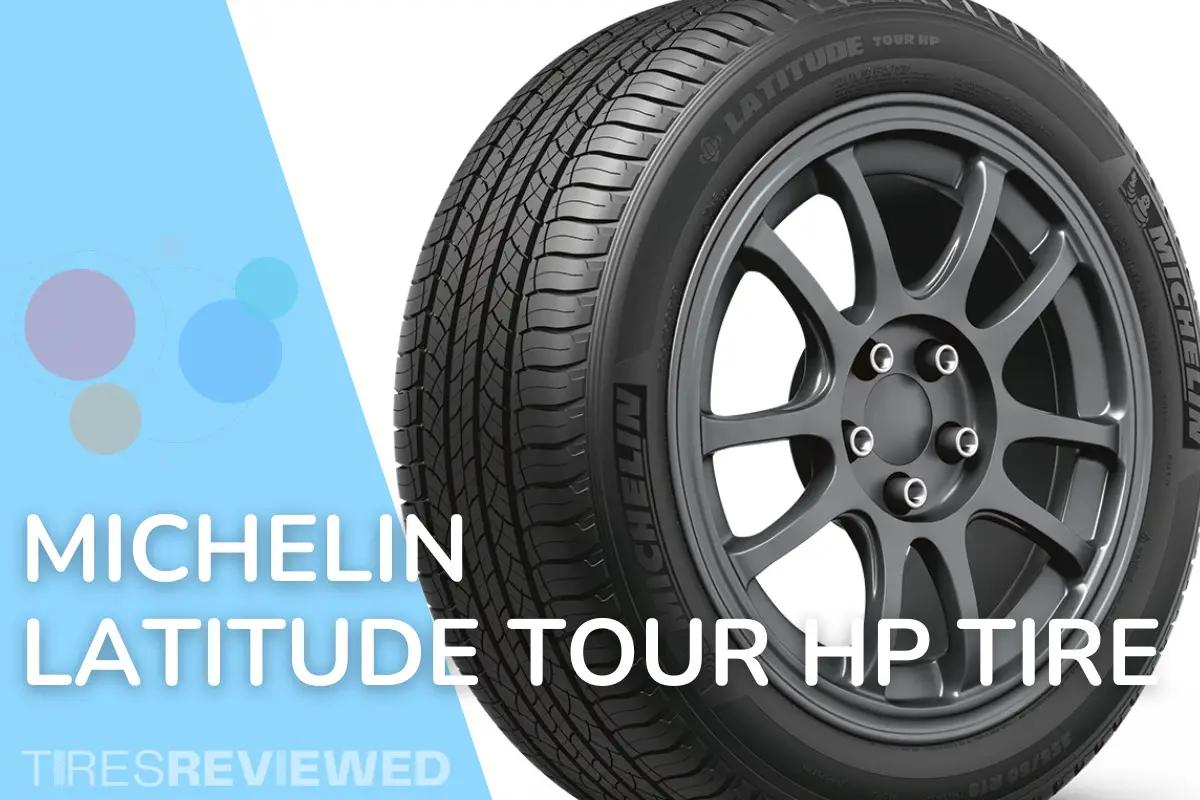
Michelin Latitude Tour HP Tire Review
By Tires Reviewed
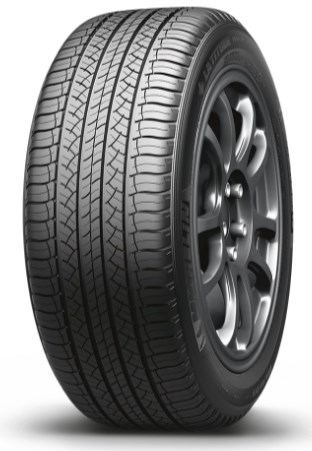
The Michelin Latitude Tour HP tire review is a comprehensive exploration of a high-performing tire designed for premium crossover vehicles. The tire offers a blend of all-season capabilities and performance attributes, aiming to provide confident handling, a comfortable driving experience, exceptional stability at high speeds, and impressive fuel efficiency. The review covers features, performance in various conditions, and its contribution to Michelin’s Total Performance philosophy. It also discusses warranty coverage and real-world user opinions.
Tire Technology and Features
2-d active sipes.
Michelin’s Latitude Tour HP tire improves traction in the snow and rain thanks to its 2-D Active Sipes technology. These sipes are crucial because they interlock to increase rigidity, which aids in the management of rain and snow. These dynamic sipes lock together when the tire contacts wet or snowy surfaces, increasing the tire’s stability and grip and, in turn, its responsiveness and safety in adverse weather.
FAZ Technology™
The Latitude Tour HP has Michelin’s exclusive FAZ Technology TM , which contributes significantly to the tire’s ability to inspire trust and steadiness at high speeds. This technology allows for a steady and regulated ride at high speeds by selectively putting polyester and aramid/nylon filaments under the tread of the tire. In particular, aramid, best known for its application in bulletproof vests, enhances the tire’s stability and grip to provide a responsive and secure driving experience.

Specific Tire Shape And Tread Compounds
Michelin makes great effort in developing the geometry and composition of the Latitude Tour HP’s tread to guarantee low rolling resistance and low fuel consumption. This unique tire form and improved tread materials eliminate excessive friction during rolling, therefore boosting fuel efficiency and minimizing hazardous emissions. These technologies align with Michelin’s commitment to sustainability and environmental responsibility while offering drivers a cost-effective solution at the pump.
M+S Rated Tire
The Michelin Latitude Tour HP has the all-season M+S (mud and snow) rating. With this rating, you may feel comfortable driving in a wide range of weather, from light snow to muddy terrain. The M+S rating demonstrates the tire’s adaptability and dependability in various weather conditions, from driving on a wet highway to traversing light snow.
Performance in Different Conditions
Dry road performance.
The Michelin Latitude Tour HP excels on dry roads. The tire’s symmetrical tread design, continuous center rib, and reinforced shoulders provide precision steering and directional stability. A steady and balanced feel allows confidence in handling and control on highways and twisting routes. With improved siping and unique compounds, the Latitude Tour HP provides excellent dry traction and braking, making it a top choice for snappy, aggressive driving in favorable weather.
Wet Road Performance
The Latitude Tour HP’s 2-D Active Sipes and improved tread design improve wet road performance. By locking together for rigidity, these sipes improve wet traction and grip, decreasing hydroplaning and improving rain handling. On wet roads, the tire has slightly less grip but a good steering feel in dry conditions. It balances the front and rear tires, ensuring stability and control, but it may take more work to restore control in some conditions. Wet performance is good due to modern technology and tire structure.
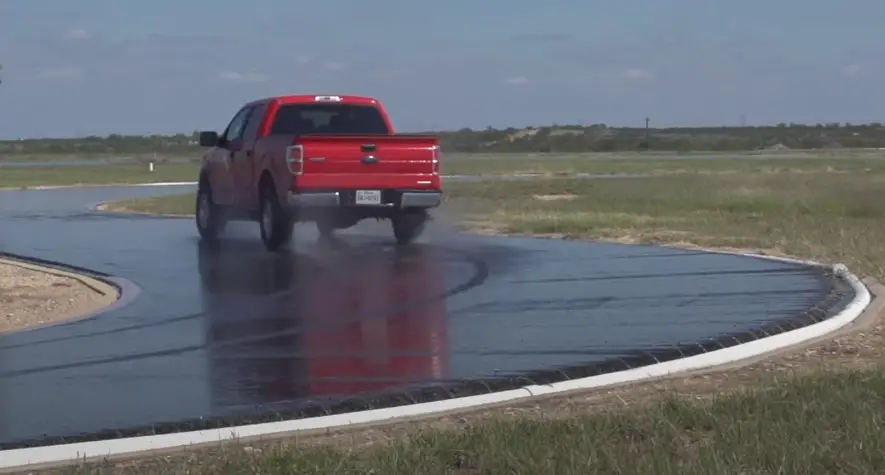
Winter Road Performance
The Michelin Latitude Tour HP performs well in mild and icy snow and ice without 3-Peak Mountain Snowflake certification. Interlocking sipes and multi-directional biters in the tread design provide excellent ice and snow grip. Biters grip snow particles and interlock for better grip than snow-to-rubber contact. These qualities make winter driving confident. However, this tire is not for extreme weather conditions. It’s ideal for light snow and occasional winter driving due to its all-season adaptability and winter characteristics.

Off-Road Performance
The Michelin Latitude Tour HP, developed for luxury crossovers, isn’t off-road. It has excellent on-road performance and a quiet, pleasant ride but lacks robust equipment for off-roading. The low-profile tire’s sidewalls aren’t designed for off-roading due to its highway stability and ride comfort. For off-road activities, the Latitude Tour HP is not the best choice. Specialized off-road tires are recommended.
Noise Levels and Ride Comfort
Due to superior tire technology, the Latitude Tour HP rides quietly and comfortably. Due to its tread composition, the “HP” type may make some noise, although variable-pitch tread design generates a range of sound frequencies to reduce this. The tire’s strong nylon cap ply stabilizes cornering but doesn’t absorb bumps or dampen vibrations, hurting ride smoothness. However, its excellent steering responsiveness, precise handling, and pleasant road performance make driving enjoyable.
Fuel Efficiency
The Michelin Latitude Tour HP is eco-friendly due to its fuel efficiency. Advanced technology minimizes rolling resistance in the tire. Lower rolling resistance reduces tire rolling effort, improving fuel efficiency. This tire form and tread compound reduce friction when driving, lowering CO2 emissions and fuel consumption. Saving money at the pump without sacrificing tire performance makes the Latitude Tour HP a good choice for eco-conscious drivers who want a pleasant, high-performance ride.
Tread Longevity
Michelin Latitude Tour HP tread life is exceptional. The tire’s silica-based tread compound and construction reduce rolling resistance, improving fuel efficiency and wear life. Fuel efficiency and low rolling resistance give this tire an extended tread life. Michelin’s advanced construction properly distributes contact forces across the tire, balancing wear and extending life. Treadwear may vary depending on driving habits and road conditions, but the Latitude Tour HP is known for its longevity and performance.
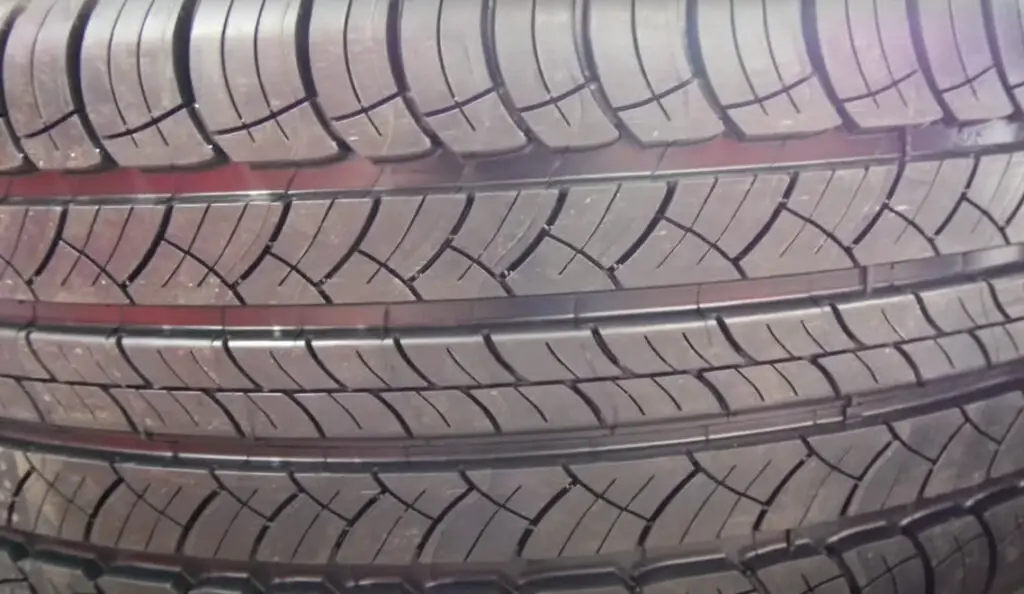
Warranty Coverage
Michelin Latitude Tour HP tires come with various guarantees, including a 60-day money-back guarantee if you’re not happy with them. These tires come with a variety of treadwear limited warranties from the manufacturer, each of which covers a different number of miles and speeds. Manufacturer’s treadwear limited warranties vary by tire rating, with the highest covering 55,000 miles for V and H tires, the lowest covering 45,000 for W tires, and the lowest covering 30,000 for H tires.
In addition, Michelin offers a Standard Limited Warranty on all of their tires, including the Latitude Tour HP, which protects against manufacturing flaws for the duration of the tread’s original service life or up to six years from the date of purchase.
Vehicles That Fit Michelin Latitude Tour HP Tires
- Acura MDX and Acura ZDX
- BMW X5 , BMW X6
- Chevrolet Colorado
- Dodge Durango
- Ford Edge, Ford F-150 , Ford Ranger
- Honda Passport
- Isuzu VehiCROSS
- Jeep Grand Cherokee
- Land Rover Discovery, Land Rover Range Rover
- Lexus GX460
- Lincoln MKX
- Mercedes-Benz GL63, Mercedes-Benz GLE400
- Nissan Titan
- Porsche Cayenne, Porsche Panamera
- Subaru Ascent
- Toyota 4Runner and Toyota Tacoma
- Volkswagen Touareg
Compared With Other Tires
Bridgestone alenza as ultra vs. michelin latitude tour hp.
When comparing the Bridgestone Alenza AS Ultra to the Michelin Latitude Tour HP, it is clear that the former offers superior performance in a variety of respects. Drivers looking for all-season premium touring tires will find the Alenza AS Ultra to be an attractive option thanks to its superior performance, dry and wet grip, snow and ice handling, comfort, and great tread life. In contrast, the Bridgestone Alenza AS Ultra is the more reliable and well-rounded alternative for SUV and 4×4 owners seeking improved performance and longevity, while the Michelin Latitude Tour HP shines in dry traction but falls short in many critical characteristics.
Michelin Latitude Tour HP Tire vs. Pirelli Scorpion Verde All Season
When comparing the Michelin Latitude Tour HP Tire to the Pirelli Scorpion Verde All Season, it’s clear that both tires excel in all weather conditions and provide a quiet, comfortable ride. Those who value durability may consider the Latitude Tour HP due to its superior dry and wet traction and extended tread life. However, the Pirelli Scorpion Verde All Season is notable for being eco-friendly because of its low rolling resistance, which improves gas mileage. Its sportier handling makes it a popular choice. Those concerned with environmental impact may prefer the Pirelli, while those who place a premium on durability and dependability may go with the Michelin Latitude Tour HP.
Michelin Latitude Tour HP Tire vs. Goodyear Assurance WeatherReady
When comparing the Michelin Latitude Tour HP Tire to the Goodyear Assurance WeatherReady, it’s clear that both tires are capable of handling a wide range of weather and road conditions. Goodyear Assurance WeatherReady tires have outstanding traction on snow and ice, while the Michelin Latitude Tour HP performs admirably in dry and wet situations. However, the Michelin Latitude Tour HP Tire is the go-to option for individuals in search of a tire that will last for a very long time. The Michelin offers durability, while the Goodyear shines in the snow. Which one a driver chooses may depend on his or her own needs.
Customer Feedback
Customers who have succeeded with the Michelin Latitude Tour HP Tire often remark on how well it performs in a wide range of situations. They like the tire because of its quiet operation, smooth ride, and high levels of dry and wet traction. Drivers report longer tread life, a feature frequently cited in reviews of this tire’s positive qualities. Overall, these contented buyers found the Michelin Latitude Tour HP to be a dependable and high-quality option that inspired trust when driving.
The Latitude Tour HP Tire has received some negative reviews due to how it performs in certain environments. Customers have complained about the tire’s poor performance in the snow and ice, highlighting its weaknesses in these conditions. In addition, several customers have complained about the tire’s higher cost compared to alternatives. While Michelin Latitude Tour HP typically receives excellent ratings, the negative comment indicates areas where it may not fulfill every driver’s expectations, especially in demanding road conditions and price considerations.
The Michelin Latitude Tour HP is a premium all-season tire designed for crossover vehicles, SUVs, and light trucks. It offers impressive on-road performance with precise steering response, stable handling, and a smooth ride. It excels in both wet and dry conditions with advanced tire technologies like 2-D Active Sipes and FAZ Technology™. Although not strong on snow and ice, it is ideal for drivers who prioritize comfort, fuel efficiency, and confident handling. The tire’s comprehensive warranty coverage and lower rolling resistance further enhance its value. It’s suitable for luxury vehicles and premium crossovers.
Frequently Asked Questions
Is the michelin latitude tour hp suitable for snowy and icy conditions.
The Latitude Tour HP is made to perform well in both dry and rainy situations, making it ideal for year-round use. Although it performs adequately in light snow, it is not a substitute for winter tires, which are better suited to the traction demands of snow and ice.
How does the 2-D Active Sipes technology improve the tire’s performance?
2-D Active sipes, by locking together to increase rigidity, are made to improve handling in wet and snowy conditions. When driving on slippery surfaces like ice or snow, this improves grip and stability.
What is FAZ Technology™, and how does it benefit the tire?
To improve handling and stability at high speeds, FAZ Technology TM uses a layer of polyester and aramid/nylon filaments beneath the tread. Aramid, a highly durable material, helps the tire maintain its shape, giving the driver peace of mind even at high speeds.
How does the specific tire shape and tread compounds contribute to fuel efficiency?
Tire design and tread compounds used in the Latitude Tour HP work together to minimize rolling resistance, hence maximizing fuel economy. As a result of this decrease in rolling resistance, less fuel is used and less hazardous pollutants are produced.
Does the tire come with different speed ratings?
To accommodate a wide variety of vehicles and performance needs, Michelin offers the Latitude Tour HP in multiple speed categories (H, V, W, and Y).
What is the mileage warranty for the Michelin Latitude Tour HP?
The Latitude Tour HP comes with a guarantee that covers anywhere from 30,000 to 55,000 miles. The tire’s speed rating determines this range. The warranty’s terms guarantee the tire’s durability and effectiveness.
Is the Michelin Latitude Tour HP recommended for off-road driving?
The Latitude Tour HP is a road tire that performs well in both urban and rural settings. It is not designed for extreme off-roading and should be used only on regular roads.
Leave a Comment Cancel reply
You must be logged in to post a comment.

Michelin Latitude Tour Review: Solid, but not Exceptional
“This post contains affiliate links, and I will be compensated if you make a purchase after clicking on my links.”

- Reliable traction and grip on dry tarmac
- Good stability on the highway
- A responsive and direct steering
- Very good wet traction and braking
- Outstandingly smooth ride quality
- Very quiet at highway speeds
- Snow and ice traction are below average
- Treadlife is far from exceptional, especially for the price
- The treadwear warranty could be longer, especially for the price
- Very expensive for the performance it provides
New Year Sale @Priority Tire Valid through January 13, 2023 Available at PriorityTire.com
The rise of the popularity of crossovers and SUVs didn’t happen because of the off-road abilities of these vehicles. Instead, buyers were lured by the roomy interiors and adventurous looks on the outside. Also, most crossover and SUV owners never venture outside of the road.
This necessitated tire manufacturers to produce rubber for crossovers and SUVs that are designed only for on-road use. Crossover/SUV touring tires are one of the best-selling tires on the market right now, and every serious tire company has a competitor in the segment.
Of course, that includes Michelin, a company that’s known for producing high-quality premium tires that often push the envelope. Michelin’s crossover and SUV touring tire, called the Latitude Tour, is now one of the oldest in its category.
Despite that, we learned by now that Michelin knows how to make products that are ahead of its time. Many tires from the French company still compete for best-in-class honors, even though they were launched over five years ago.
That said, the Michelin Latitude Tour faces stiff competition from outstanding tires, such as the Continental CrossContact LX25 , Pirelli Scorpion Verde All Season Plus II, and Bridgestone Dueler H/L Alenza Plus .
And, perhaps more tellingly, all of these premium competitors are much less expensive than the Latitude Tour. As a matter of fact, the Latitude Tour is the priciest tire in its category, even when compared to newer premium rivals. So, is Michelin’s product worth the extra cost?
You’ve arrived just in the right place to have that question answered. In this article, I’ll cover every detail about the Michelin Latitude Tour, including the performance it offers on dry, wet, and snowy roads, the comfort levels, and treadlife.
Before we jump to any conclusions, though, let’s see what Michelin has to say about the features of the Latitude Tour.
What are the features of the Michelin Latitude Tour?

According to Michelin, the Latitude Tour is a crossover/SUV touring tire designed for a quiet ride, outstanding fuel efficiency, long treadlife, and impressive on-road comfort and handling. To be honest, though, you will read almost the same things on the websites on other manufacturers, even those that produce cheaper alternatives.
Michelin continues to praise the wet traction of the tire – the Latitude Tour stops 5% shorter in rainy conditions than the predecessor. That’s not a lot but bear in mind that the French company almost always provides the best results in wet conditions.
To achieve these things, Michelin utilized its tried-and-true Total Performance technology. The French company claims that it focuses on the entire life of the tire. “All our tires have performance made to LAST, delivering, by design, an exceptional level of long-lasting performance,” the company states on its website.
Moreover, the Michelin Total Performance technology means that the engineers try to improve things in one area, without sacrificing performance in other areas.
Like in most premium tires, Michelin utilized a silica-based tread compound. The rubber is molded into a symmetric tread pattern, and both the tread compound and design are optimized for longevity and durability. Michelin calls that MaxTouch Construction, and what it means is that the tire should perform well throughout its entire lifetime.
The tread pattern itself consists of stable shoulder blocks and a continuous center rib for increased responsiveness and highway stability. Furthermore, the Latitude Tour features four wide circumferential grooves, which channel water through multiple sipes in the outboard shoulders for increased hydroplaning resistance. The sipes also help to create more biting edges for better snow traction.
Meanwhile, the Michelin Comfort Control Technology ensures that the tire provides the passengers with a comfortable and quiet traveling experience. More accurately, the technology features a computer-optimized design and precision manufacturing to reduce the vibrations entering the cabin, and mitigate road noise.
Some Latitude Tour models and sizes also come with the Green X symbol, which signifies green manufacturing techniques and increased low-rolling resistance.
On the inside, the Latitude Tour is pretty standard for a crossover/SUV touring tire. It features twin steel belts under the tread area, on top of a polyester cord casing, both working to enhance stability and ride quality.
What are the maintenance indicators?
The Latitude Tour features the regular tread wear indicators (TWI’s) like any other Michelin tire, or any other crossover/SUV touring tire for that matter. That said, some companies, like Continental, started using letters for an even better indication of treadwear.
The TWI’s are very important for the owner because they show how much tread there is left on the tire. Without sufficient tread, the tire won’t be able to resist hydroplaning well, and overall, the wet performance will suffer significantly.
On the Michelin Latitude Tour, the minimum tread depth is 2/32-inch. When the tire comes to this point, you should immediately replace it with a new one. Otherwise, you risk driving on tires that aren’t able to provide you with safe traction and braking on wet surfaces.
The treadwear indicators are narrow rubber inserts built into the circumferential grooves of the tire. As the tread of the tire wears down, these narrow rubber bars will become more visible. When the tread is only 2/32-inch deep, the bars will be completely flush with the tread.
And, while it’s recommended to replace the tire after it reaches that point, I suggest doing that earlier, especially if you want to retain snow traction and braking.
Fortunately, the Michelin Latitude Tour won’t wear down very fast. Owners report good treadlife, and Michelin covers those claims with a 65,000-mile treadwear warranty on all sizes.
That said, the Latitude Tour is also the most expensive tire in its category. And, for the price, you can get even better treadlife in the Bridgestone Dueler Alenza Plus (an 80,000-mile treadwear warranty), and Continental CrossContact LX25 (a 70,000-mile treadwear warranty).
How does it behave on a dry tarmac?

Overall, the Latitude Tour performs very well on dry roads. The tire feels responsive enough for accurate positioning of your vehicle in the corners. Also, the directional stability is top-notch, even at highway speeds.
In terms of grip levels, the Michelin Latitude Tour is in the upper echelon of the class. If you want it more honestly, the cornering grip is very good, but I expected more for the price. It’s the same with traction and braking, which are fine, but far from exceptional.
These are things that you probably won’t be able to test on public roads. The differences between the best tires and the Latitude Tour are nearly imperceptible in daily driving.
How is it over wet and slippery roads?
The Latitude Tour is one of the better touring tires for driving on rainy days. The hydroplaning resistance of the tire is top-notch, and the traction levels are excellent.
Moreover, the tire achieves some of the shortest braking distances in the category, both in light and heavy rain. And, thanks to the Total Performance package, the Latitude Tour retains the safe traction after it wears down.
With that being said, how is it on snowy roads?
Michelin employed zig-zag sipes on the inner and outer tread blocks of the tire, which in theory should give the Latitude Tour excellent snow traction.
However, in the real world, the tire is far from usable in those conditions. You can get some traction on snow, but other premium competitors fare much better. It’s the same with braking – the distances are longer than the best in the category.
Is it suitable for off-road driving?
The Latitude Tour is a touring tire, which means that it’s designed mostly for driving on paved roads. Sure, you can utilize the tire over hardpacked surfaces, but don’t expect high levels of grip. Moreover, the Latitude Tour doesn’t have a tough casing that will protect it from cuts and punctures.
Is it comfortable and refined?
Not that we expected anything less from a Michelin product, but the Latitude Tour is supremely quiet and comfortable. The ride quality is particularly impressive – the tire easily works out smaller and larger imperfections on the road. Also, road noise is minimal, even at highway speeds.
You can see more Michelin Latitude Tour Review here: Video created by AutoServiceWorld
Should I buy the Michelin Latitude Tour?
The Michelin Latitude Tour is an excellent touring tire for owners of crossovers and SUVs. Overall, it provides the driver with safe traction on dry and wet surfaces, good treadlife, and outstanding comfort.
However, the price of the Latitude Tour is exceptionally high, even when compared to other premium tires. And, it’s here that the tire loses against its stiff competition.
For example, the Bridgestone Dueler Alenza Plus and Continental CrossContact LX25 beat the Michelin Latitude Tour in many categories, while also having higher treadwear warranties. And, they are cheaper, too.
For those reasons, I would recommend the Michelin Latitude Tour only if you get a good deal. Otherwise, you can save over $100 on some sizes if you opt for products from the main competitors.
LIST OF MICHELIN TIRE REVIEWS
Michelin agilis crossclimate review: a game changer, michelin crossclimate 2 review: one of the best all-season tires around, michelin crossclimate plus review: a good but overly expensive tire, michelin crossclimate suv review: an excellent (and pricey) all-rounder, michelin defender ltx m/s review: simply outstanding, michelin defender t+h review: excellent overall, michelin ltx a/t2 review: excellent road and gravel tire, michelin pilot sport 4s review: outstanding tire for driving enthusiasts, michelin pilot sport a/s 3+ review: ultra-high-performance all-season tires, michelin pilot sport all-season 4 review: new all-season performance king, michelin pilot super sport review: starts to show its age, michelin premier a/s review: premium all-season touring tire, michelin premier ltx review: premium driving experience for trucks and suvs, michelin primacy mxm4 review: excellent but costly, michelin primacy tour a/s review: a competent grand-touring all-season tire, michelin x tour a/s t+h review: a solid “costco exclusive” tire, michelin x-ice snow review: designed for the extreme winter conditions, michelin x-ice xi3 review: an excellent winter tire, leave a comment cancel reply.

Bridgestone vs Michelin Tires: Detailed Comparison 2023
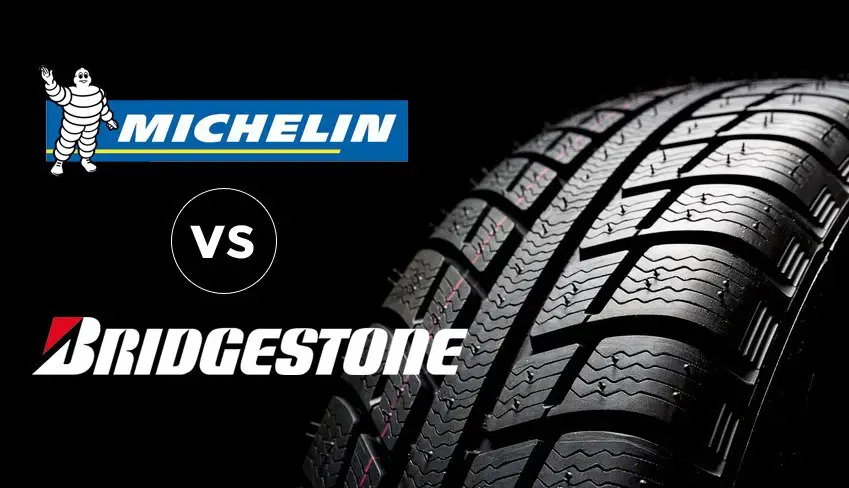
When it comes to tire manufacturers, we can’t exclude the debate between the two top-tier giants, Bridgestone and Michelin. They’re both famous for producing economic, efficient, and high-performing tires for cars, trucks, motorbikes, and more.
However, it’s critical that you consider which tire brand above is better for your vehicle. To make the right decision, you need to compare them in terms of their tire performance, durability, safety, comfort, and so on.
If you’re clueless, don’t worry since this article is your savior. We’ll help you determine whether Bridgestone or Michelin is worth your money the most.
Table of Contents
General Information About Two Brands
Bridgestone overview – world’s largest tire and rubber company.
Bridgestone is a Japan-based manufacturer which produces and sells rubber and tires worldwide. Interestingly, the brand’s name is from the founder’s name, Shojiro Ishibashi, which means “bridge stone” in English. It was founded in 1931 in Fukuoka, Japan.
Bridgestone’s product line extends beyond tires to include a variety of automobile parts and accessories. It also deals in a wide range of other items and services. They include journalistic and commercial services and sports equipment like golf clubs.
The early beginnings of this Japanese tire corporation can be traced back to the sale of Japanese footwear. Rubber-soled tabi was a big moneymaker for Ishibashi. His rubber firm was doing well. Therefore he had plans for an expansion.
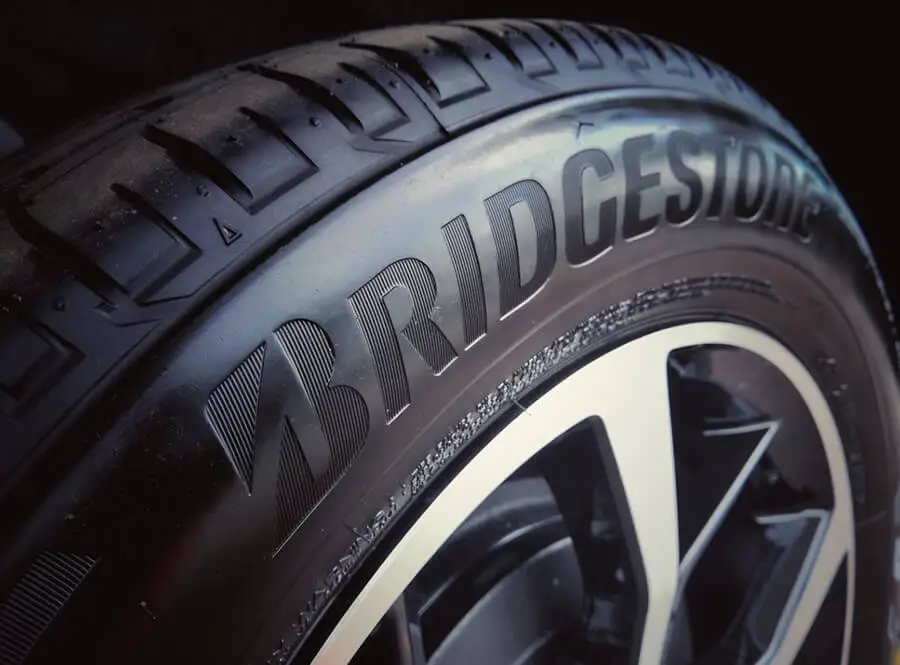
Amazingly, the tire industry did not exist at that time. After years of research and development, Ishibani established Bridgestone Ltd. He renamed it Bridgestone Corporation in 1984.
Acquisitions and mergers were the results of Ishibani’s goal for growth and expansion. One of Bridgestone’s most major buyouts was the Firestone Tire & Rubber Company. Bridgestone and Firestone joined in 1988. The merger made this Japan-based manufacturer the world’s largest tire maker .
Michelin Overview – Top-Selling Tire Brand Worldwide

Michelin is the world-leading tire and rubber manufacturer. They produce a variety of tires for planes, cars, large trucks, motorbikes, and bikes.
Innovative services and solutions for friendly automobiles were also important fields of this corporation. On the other hand, Michelin has a considerably longer history than Bridgestone.
The Michelin brothers, André and Édouard , started a rubber ball and farm equipment manufacturing in 1832. Until 1889, they came across a special event. It helped them grasp the significance of bicycle tires.
Particularly, a bicycle with a broken pneumatic tire arrived at their factory. The big issue was that its tire adhered to the rim, which took the brothers hours to split them apart. It led to a striking idea that the tire could split from the rim and be a stand-alone unit.
As a result, the brothers produced the world’s first pneumatic tire. Michelin indeed was the first to develop contemporary ones. Other major inventions have been credited to this French firm.
A design that is still in widespread use today, the run-flat tire, was invented by the Michelin brothers in 1934. These men also developed radar tires, which enhanced road safety.
In 1989, Michelin acquired B.F. Goodrich Company and Uniroyal, Inc ., two major purchases. It is now present in 171 countries and employs 5,000 agents, with a total market share of 14 percent.
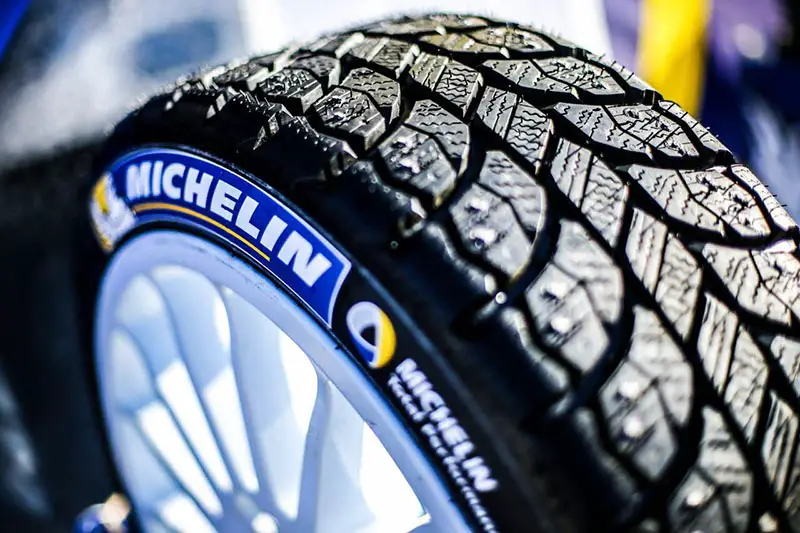
Interestingly, Michelin is also known for the Michelin Guide . It awards stars to the best restaurants in the world. The Michelin brothers compiled it in the early 1900s. This guide is to assist traveling drivers in their quest for dining establishments.
Michelin vs Bridgestone: A Comprehensive Comparison
Performance and safety.
Be it Bridgestone or Michelin, they are the most efficient premium tire brands. However, when it comes to performance and safety, there’s a bit of difference between them. Take a more detailed look to find out who’s the winner in each weather condition.
Wet Performance
The two brands are good choices for wet conditions. They aren’t the best, but they’re still fantastic anyway.
For the Japanese firm, no traction is lost. They don’t make cornering difficult or increase your braking distance. Some drivers say these tires outperform dry tarmac in rainy conditions.
If you’re not used to driving on wet roads, the tires’ slickness will improve the experience. It does not state that they are less safe; in fact, they are more alert.
Customers also have satisfied feedback on the wet-road performance of the Michelin. They grip better in the rain since the tread gets wider with wear. Besides, it also benefits from the slick roads having less of a surface to rub against.
Compounds in the wheels’ rubber, particularly sunflower oil, cause a lot of friction. The softness of the wheels is able to maintain the gripping quality, thanks to the oil.
Hence, they’re even in this Bridgestone vs Michelin wet performance round. Both of them do a great job.
Dry Performance
Regarding driving on dry roads, the Japanese candidate appears to be less responsive to your touch. In other words, it seems awkward to handle. Fortunately, the uncomfortable handling goes away after a while of stoking the flames.
On the other hand, the French rubbers perform admirably on dry roads. Their reactivity is a lot better than the Japanese ones. The tires move in the appropriate direction with the lightest touch and correspondingly speed up and slow down.
Moreover, the tread makes better braking performance. It does contribute to the luxury quality of these tires that you won’t get in other brands.
Apparently, the French firm is the winner in this Michelin vs. Bridgestone round. It overwhelms the Japanese company in dry performance since it allows for easier handling.
Winter Performance
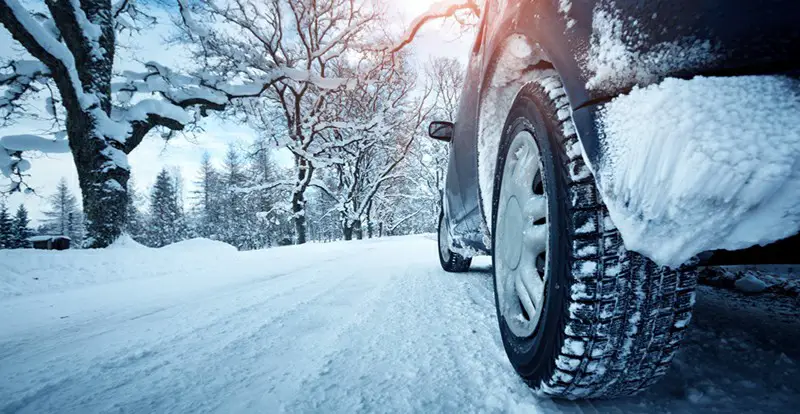
Bridgestone’s often regarded as the snow tire by customers. The grippy treads can handle even light and significant snowfall. They stick to ice better than any other brands the customers have used.
Products from Bridgestone are worth considering if you live in snowy and slippery conditions. Drivers in heavy snowfall locations should opt for winter tires over all-season ones. It’s for their own safety.
In opposition, the French one may be all-season type, but they aren’t snow-ready. Customers state that the tires eventually fail and become too firm to function properly. As a result, they are unable to manage deep snow.
Thus, for winter performance, the Japanese manufacturer takes the lead over its rival.
Durability and Warranty
In this round of the Bridgestone and Michelin tires matchup, both place a high value on long-term usability. They also make use of cutting-edge, fuel-saving technology. For the owner, they not only save money but also reduce pollutants.
However, there’s a difference between the warranty policy of these two corporations. The Japan-based company offers two types of warranties: a trendline warranty that lasts for three years and a three-year type that is still valid after 65,000 miles . Meanwhile, the other candidate only covers 60,000 miles of tread life.
Hence, if you’re looking for a brand that gives you a better guarantee, go for the Japanese one.
Comfort and Noise
The Bridgestone takes the stress of potholes or debris without disturbing you. Customers don’t appear to be blown away by the comfort level yet.
On the other hand, the Michelin provides a comfortable ride, thanks to its soft and supple tires. It has excellent shock absorption when driving over minor debris or potholes.
While a tire’s comfort comes in the form of its noise level, no one wants a growl to interrupt their cruising ride. It’s where the Japanese tire products fail the customers again. In terms of noise, they’re a little louder than other companies’ touring tires.
Similarly, the French lines do not produce a quiet ride. Even though they don’t make a lot of noise, rattle, or roar, a faint hum may appear. However, with the wind or the car radio, consumers might not notice it.
In this round, Michelin has an edge over the other. They bring more comfortable and less noisy experiences to customers compared to Bridgestone.
There isn’t much of a difference in pricing between two brands. Both of them are some of the priciest brands out there.
They spend a lot of money on R&D. That’s why you don’t only get brand panache. You’re also approaching a set of premium goods with better performance and technology.
If you wish to save a little amount of money then, Bridgestone is a better choice. However, Michelin also offers a wide range of products at different prices for their customers to choose from.
Bridgestone vs Michelin: Tires Categories
Bridgestone tires, passenger-car tires .
Are Bridgestone tires good in terms of passenger car lines? The answer is yes. They have one of the broadest car tire lines in the industry. These types all have a high level of performance, comfort, as well as long-term durability.
Ecopia . Passenger and touring products for drivers of compact automobiles, minivans, and sedans. They give up a little traction in their performance. It’s an exchange for increased endurance and reduced fuel consumption. Compared to other lines, Ecopia is quiet and less expensive.
Featured Tire: Bridgestone Ecopia EP422 Plus
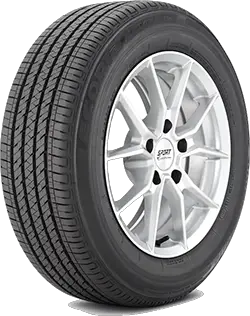
Turanza . This type is for touring and grand-touring tires. Compared to Ecopia, Turanza has improved high-speed stability and grip. Additionally, it might be comfortable while still maintaining a similar level of durability.
Featured Tire: Bridgestone Turanza QuietTrack
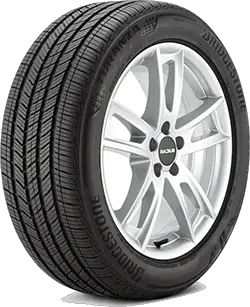
Potenza . Superior handling, great grip, and superb stability are all hallmarks of this line. If you have a high-performance vehicle, Potenza is for you.
Featured Tire: Bridgestone POTENZA Sport
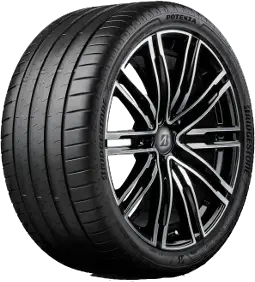
Dueler . This line is quite similar to the Turanza. But they are geared toward owners of crossovers, SUVs, and trucks.
Featured Tire: Bridgestone Dueler H/L Alenza Plus
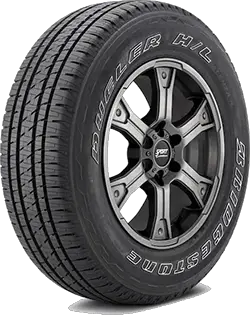
Blizzak . It’s for winter tires. In most winter performance test comparisons, Blizzak comes out on top.
Featured Tire: Bridgestone Blizzak WS90
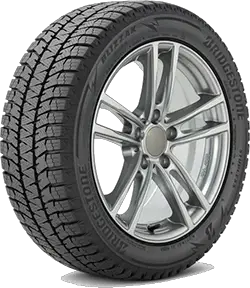
View more Bridgestone tire reviews at here
Motorcycle Tires
A wide variety of motorcycle tires are available at this Japan tire maker. These include performance products for the street and off-road. They also support gravel road and urban driving tires.
Commercial Tires
The company also makes significant investments in commercial lines. They have products for vans, semi-trucks, and buses.
Michelin Tires
It appears that Michelin’s tire line is more varied than the previous one. Tires for passenger cars are available in a wide variety of sizes. Durability, safe traction, and high comfort levels are all promised by these products.
Defender . This line includes touring and highway products. They are noted for their long tread life and durability. They also perform great traction in both dry and rainy weather, with high levels of comfort.
Featured Tire: Michelin Defender LTX M/S
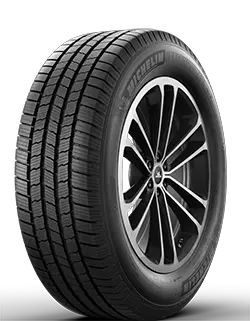
Primacy . It’s for touring and grand touring models. Sedan, coupe, minivan, and crossover drivers should use Primacy. They provide better cornering traction both on dry and rainy roads. Besides being quiet and comfy, Primacy is also long-lasting.
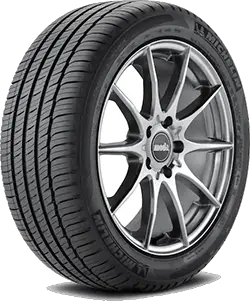
Premier . The line is best suited to cars such as the Toyota Camry or Honda Accord. They’re also great for minivans, crossovers, SUVs, or trucks.
Featured Tire: Michelin Premier LTX
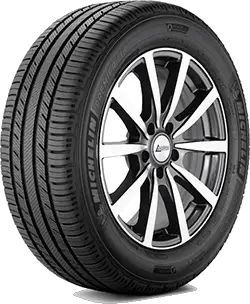
Pilot Sport . This merchandise is suitable for sedans, coupes, SUVs, and pickup. They tend to perform well in both on-track and off-track comparisons.
Featured Tire: Michelin Pilot Sport AS 3+
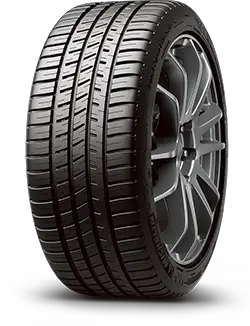
CrossClimate . Family of all-season tires with an emphasis on winter performance.
Featured Tire: Michelin CrossClimate 2
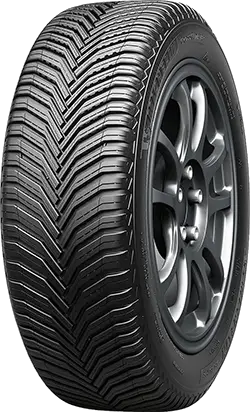
Latitude and Alpin . This line has been through its paces in the most arduous winter conditions. They have proven to be reliable on snow and ice.
Featured Tire: Michelin X-Ice Xi3
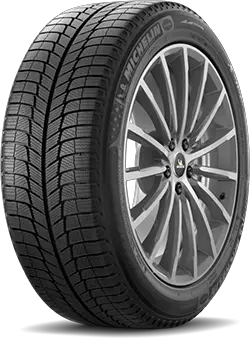
View more Michelin tire reviews at here

Motorcycle Tires
How about the Michelin and Bridgestone tires for motorcycles? Amazingly, the France-based manufacturer is the most popular motorcycle tire brand. It has more diverse types than Bridgestone.
Tires for cruisers, Enduro, MX, Roadster are all available from the French firm. They also support Sport, Sport Touring, Trials, and Scooter rubber products. There’s even a line of tires designed specifically for electric bicycles.
Similar to the Japanese firm, Michelin produces tires for vans, semi-trucks, and buses. They are noted for their long-term durability and performance. Customers also appreciate their comfort and ease of use.
Who is The Winner? Bridgestone or Michelin
There’s no doubt that these two brands have been consistently on top of the tire industry for years. They provide the best products for many types of customers around the world. Here’s a short conclusion for you.
Opt for the Michelin if you want:
- Better dry and wet performance
- Better comfort and less noise
- Diverse vehicle tires
Go with the Bridgestone if you’re keen on:
- A slightly lower price
- Better warranty policy
- Better winter performance.

David Barlow
Automotive Experts at World Tire Review
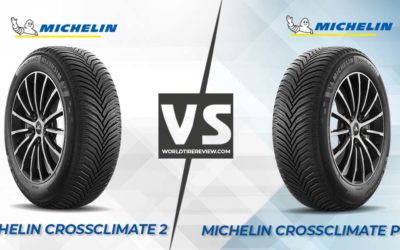
Michelin Crossclimate 2 Vs Crossclimate Plus Vs Crossclimate SUV
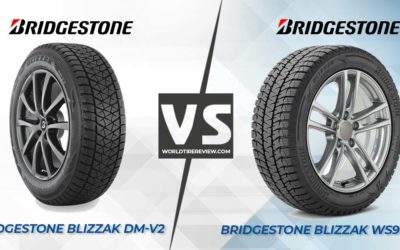
Bridgestone Blizzak DM-V2 Vs WS90: What Is The Difference Between?
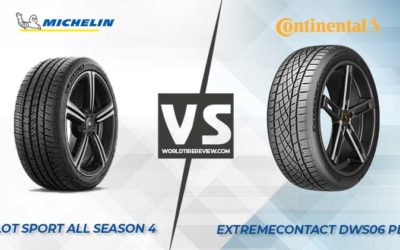
Michelin Pilot Sport All Season 4 Vs Continental Extremecontact DWS06 Plus
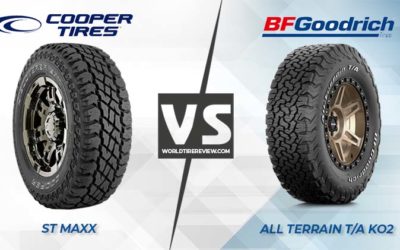
Cooper ST Maxx vs BFGoodrich All Terrain T/A KO2 In 2022
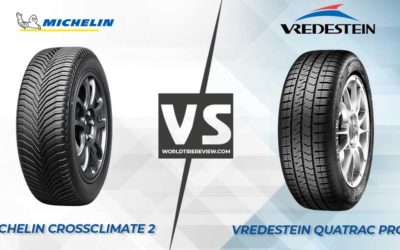
Vredestein Quatrac Pro Vs Michelin Crossclimate 2: Thorough Comparison
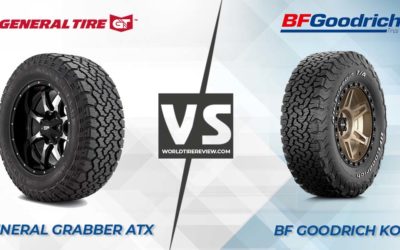
General Grabber ATX Vs BFGoodrich All-Terrain T/A KO2 – How Different They Are
- Skip to primary navigation
- Skip to main content
- Skip to primary sidebar
TireTerrain
Bridgestone vs Michelin
Updated: January 8, 2024 by Emrecan Gurkan Leave a Comment
Bridgestone and Michelin are top-notch tire brands that have been in competition since Bridgestone was founded in 1931. While both are great tires, what customers should expect from them is a little different.
As a former Bridgestone Engineer, I think that these are close-rated brands. However, I believe that both brands have pros on cons. The good news is it looks like they share the market by categories.
Michelin vs Bridgestone: Comparetive Comparison
With the developments in the tire industry, tires began to be classified in more detail. For instance, 5 years ago there is no all-weather tire. But now, we separated all-weather and all-season tires. So, there are tons of other tire categories. Nevertheless, I’ll share the most popular ones and compare them one by one.
Before starting, I’d like to briefly talk about different tire families by brand.
Bridgestone vs Michelin Tire Family Comparison (Imported From Table Press)
From that point, I’m going to share my best tire selection by brand and compare them to each other.
Affordable Tires
Premium brands know that they should also compete with affordable tire brands. Hence, they create tire families.
So, in this section, I’m going to compare these families and help you to find the best one for yourself.
Our tire families will be Michelin Primacy and Bridgestone Ecopia for this section.
Let’s start with the summer tires;
Grand Touring Summer :
Michelin and Bridgestone don’t offer any affordable tires for this segment. The only tire available in this segment fits in only a couple of electric vehicles.
- Bridgestone Ecopia EP500 – This is an electric vehicle-oriented narrow tire
Grand Touring All-Season :
- Michelin Premier A/S – Wet traction, great handling
- Bridgestone EP422 Plus – Longevity, fuel efficiency
Passenger All-Season :
- Michelin Energy Saver A/S : The only tire I can recommend for this segment but still has a slight delay while steering
- Bridgestone Ecopia EP150 : Only available for electric vehicles
- Michelin Premier LTX – Great tire for performance but doesn’t last long
- Bridgestone Ecopia H/L 422 Plus – Great tire for fuel economy and longevity
All-Season Tires
The last section is for the money savers, and the remaining sections are coming for those who are looking for something special!
So, unlike most people think, all-season tires can’t perform perfectly in the winter. Most of them can handle mild winter conditions, though, there is another segment between winter and all-season tires that offers better winter performance with a little sacrifice from deaf driving. All-weather tires!
In my point of view, all-weather tires stay on the top of the all-season tires rating chart. Hence, I’ll compare all-season to all-season and all-weather to all-weather.
Let’s move on!
Standard Touring All-Season (balanced, relatively cheaper) :
- Michelin Defender T+H – Great on everything but severe winter performance
- Bridgestone – I don’t recommend any tire from Bridgestone
The market is shallow for this category. My favorite tire in this segment is Goodyear Assurance MaxLife .
Grand Touring All-Season (longevity focused) :
- Michelin Primacy Tour A/S – Cozy & quiet tire, offers slightly better traction – ( review )
- Bridgestone Turanza QuietTrack – Smooth & quiet tire, offers slightly better longevity – ( review )
Grand Touring All-Season (performance-focused) :
- Michelin Primacy MXM4 – Smooth and quiet ride
- Bridgestone DriveGuard Plus – Better traction and longevity
All-Weather Tires (best for severe winter conditions) :
- Michelin Crossclimate 2 – Best all-round tire ever released, no compromise – ( review )
- Bridgestone WeatherPeak – Don’t let tread fool you. It’s the quietest tire in this segment. It’s new but it’s gonna dethrone Crossclimate 2 soon
Crossover/SUV All-Season (longevity focused) :
- Michelin Latitude Tour HP – Great all-round tire with winter performance defect
- Bridgestone Dueler H/L Alenza Plus – Impressive balance and performance, in the best competition
Crossover/SUV All-Season (performance-focused) :
- Michelin Crossclimate SUV – Great all-round tire
- Bridgestone Alenza AS Ultra – Offers longer tread life but slightly worse winter performance
Performance Tires
The tires in this segment are mostly used on sport utility vehicles. Unlike all-season tires, these tires promise different features.
Since these tires are used on high-torque and powerful-engine vehicles, their main goals are to grip the surface and provide reliable handling. Hence, they have reinforced sidewalls and relatively fluffier compounds. So, they last short but provide excellent driving experience.
Max Performance Summer :
- Michelin Pilot Sport 4S – Offers superior handling and tread life
- Bridgestone Potenza Sport – Offers better-wet performance
Extreme Performance Summer :
- Michelin Pilot Sport Cup 2 – Better for tracking
- Bridgestone Potenza S007A – Better or daily driving
Ultra-High Performance Summer :
- Michelin Pilot Exalto PE2 – Best tire for this segment
- Bridgestone Potenza R040 RFT – A bit noisy but worth every penny
Ultra-High Performance All-Season :
- Michelin Pilot Sport All Season 4 – Slightly better winter performance
- Bridgestone Potenza RE980AS Plus – Best in the segment, last long, and offers unique handling
High-Performance All-Season :
- Michelin Pilot Sport A/S 3 Plus – Better for performance and comfort
- Bridgestone Potenza RE92 – Way much better for longevity
Street/Sport Truck Summer (SUV, CUV & Performance Pickups):
- Michelin Latitude Sport 3 – Performance
- Bridgestone Dueler H/P Sport – Longevity
Winter Tires
If you’re living in a snow belt, all-weather tires won’t be enough to get decent traction in winter. Well, you need dedicated winter tires.
Here are my best picks!
Studless Ice & Snow Tires :
- Michelin X-Ice Snow – Longevity – ( review )
- Bridgestone Blizzak WS90 – Superior handling, wet & winter traction – ( comparison with WS80 )
Performance Winter / Snow Tires :
- Michelin Pilot Alpin PA4 – Unique tire that can perform perfectly on and off-season, longevity
- Bridgestone Blizzak LM32 – Better for mild winter, a really solid option if you want to still confidently push your car during the off-season
All-Terrain
Michelin and Bridgestone mostly provide all-terrain tires via sub-brands.
- Bridgestone – Firestone –> https://www.discounttire.com/tires/brands/firestone-catalog?cat=all-terrain-tires
- Michelin – BF Goodrich –> https://www.discounttire.com/tires/brands/bfgoodrich-catalog?cat=all-terrain-tires
Besides these brands, Bridgestone has one unique all-terrain tire that I generally recommend to comfort-focused customers.
- Bridgestone Dueler A/T Revo3 – Great comfort, average winter performance, and longevity
- A side note here : If you’d like to see the best all-terrain tires by vehicle or usage, this article is GOOOOLD –> https://tireterrain.com/best-all-terrain-tires/
Bridgestone Tires Overview
Bridgestone is a brand that can perfectly carry the promise of ‘safety’ with its quality, performance, and service guarantee from production to sale. Combining its ability to develop superior tire technology and the experience of producing tires suitable for the road conditions of 150 different countries of the world, Bridgestone offers superior performance and comfort for all types of vehicles and users, from motorcycles to automobiles, from construction machines to airplanes.
As an insider, I would like to briefly talk about Bridgestone’s priorities. Let’s move on!
Trust and Prestige
Bridgestone, which is sold in approximately 150 countries around the world, from Japan to the USA, is the leader of the world tire market with its global know-how, suitability for all world roads, and high-standard and quality products. Producing tires suitable for all types of vehicles, from motorcycles to automobiles, from construction equipment to aircraft, Bridgestone has combined its strength and global experience with Firestone in the US .
Innovation and Dynamism
One of Bridgestone’s main goals is to transfer all of its huge investments in research & development over the years and the technology it has developed during many motorsport sponsorships to all its products. Being able to offer these distinguishing features to all its users is one of Bridgestone’s most important values. Bridgestone always carries the flag of innovation and dynamism with the highest scores in eco projects and independent tests.
For instance, Bridgestone is the first company that uses ‘Run-Flat’ tire technology . Even though I don’t personally like run-flat tires, this is the biggest development in the tire industry in recent years.
Pro Tip : If you’d like to learn more about the difference between run-flat and regular tires, you can check this article out !
Customer Satisfaction
Developing a tire is a complex business. It takes at least three years.
While the design phase takes a year, the remaining 2 years are spent on field tests.
Well, I was part of this process. I can confidently tell you that customer satisfaction is the foremost main topic of these three years . Besides that, nothing changes after the product is released.
So, I can’t tell you that you’re gonna satisfy with all Bridgestone tires, though, if you’ll have any issue, Bridgestone will fix it!
- Founded in 1930
- The first time listed on the stock exchange was in 1961
- Bridgestone acquired Firestone in 1988. So, yes, Bridgestone and Firestone are the same company
- Bridgestone acquires Bandag, Inc. in 2007 (one of the world’s leading tire retread businesses)
- Bridgestone acquired Europe’s largest digital fleet solutions provider, TomTom Telematics (currently Webfleet Solutions)
Note : Numerically, Bridgestone is the biggest tire manufacturer.
Michelin Tires Overview
Michelin is the most popular and in my opinion best tire brand in the market.
Unlike Bridgestone, they put comfort is the top of their ‘to-do list’. Besides that, the brand itself is a test killer. If you ever read a tire test report, Michelin is probably the winner of that test.
But how can they do this? Here are the answers.
Internal Testing
Every tire manufacturer puts its tires to the test. In fact, this is a world-class necessity. Fulfilling this quality standard may be possible with standardized tests. However, Michelin has greatly exaggerated this event in order to understand in the best way what kind of difficult conditions the product it produces can actually withstand, and what kind of results it may encounter beyond the foreseen. In a year, Michelin tests its tires in such a way that 1 billion miles, yes you heard it right, 1 billion miles (1609344000 km) tire models are put to the test. This figure is equivalent to going around the planet 40 times .
Unique Compound & Design
When you are going to buy a tire, you may think about how much scientific studies have been done on it, but you cannot predict how detailed it can be. Thanks to the tread patterns developed by Michelin R&D engineers, you can provide superior performance and safety even in rainy and difficult weather conditions. This patented tread pattern, which belongs only to Michelin, has emerged with special design and design studies together with the tests. With models such as Michelin CrossClimate or Primacy you buy, you not only buy that model, but you also buy high Michelin technology.
Zero-Defect Policy
Michelin subjects it to many processes until it produces a tire. The most important of these is quality and control. Every product that is mass-produced in the world always produces faulty products. Michelin never sells faulty production from the production line. Incorrectly manufactured tires are immediately sent for recycling. Michelin has also produced its own patented machines in order to achieve the desired quality on the production line. Thanks to these special production machines, control safety has been increased and production error rates have been reduced. That’s why Michelin is the world’s best tire manufacturer today.
- Founded in 1889
- Invented the first radial tire in 1949 (now, radial tire takes 100% of the market share)
- Michelin acquired BF Goodrich in 1989. So, yes, BF Goodrich and Michelin are the same company
- Michelin acquired Uniroyal US in 1989. Though, they’re not the same company because Bridgestone bought Uniroyal Australia in 1982.
- Michelin acquired Camso in 2018
- Michelin bought 99.64% of Achilles and Corsa Tires in 2019. Affordable Michelin brand is loading!!!
Note : Numerically, Michelin is the second biggest tire manufacturer in the world.
Michelin vs Bridgestone: What to Expect
Bridgestone and Michelin respect each other strong points. This competition is the biggest factor in the development of the tire industry in recent years.
Even though both are reliable in all aspects, they meet with different customer expectations.
Let’s dig into features and find which one is best for you.
Traction is basically the grip capability of your tire. In this case, compound selection and tread design play the biggest role.
However, since dry, wet, and snow traction requires different features, separating this section into three will give us the best results.
- Dry Traction : Both brands are performing excellently in dry conditions. However, if you’re living in a dry region, I believe that Bridgestone is a better option due to its generally stiffer compound selection.
- Wet Traction : While Bridgestone is above average in this case, Michelin is leading the market.
- Snow Traction : Even though some of Michelin’s tires racks, yet, Bridgestone is the safe side pick.
Since handling is the most important safety metric, both company pays huge attention to this feature. Well, the market wants it all at once. However, it’s really hard to reach.
So, depending on the tire category, handling is affected by different features.
While softer compound decrease the handling, strong sidewalls, and compact pattern creates a huge advantage.
The competition is tight in this section. If the handling is your priority, I recommend,
- Bridgestone for summer tires
- Michelin for all-season tires
- Michelin for winter tires
Longevity is what Bridgestone promotes more. Well, there is a reason behind that.
As I’ve mentioned before, Bridgestone prefers stiffer compounds. This is a huge advantage for better mileage. However, Michelin tires are always lighter. Hence, they generally have lower rolling resistance which can slower tires’ wear.
If I were not spending 5 years in the tire industry and finding everything online, I would say, it’s a tie game. But, I’m not. So, I prefer to separate categories and share my personal experience with you.
- Summer Tires : I prefer Bridgestone tires again. I think summer tires are the weakest point of Michelin
- All-Season Tires : Michelin the whole day long. They’re the inventor of all-weather tires. They know how the combine summer tire pattern with all-season compounds.
- Winter Tires : Michelin tires will last longer. Yet, I still recommend Bridgestone tires.
Comfort and Noise
Noise reduction and comfort are the most important metrics for passenger vehicles.
These two are related to different things. While comfort is mostly related to the inner structure, noise reduction is directly related to the pattern and the void area ratio of your tire tread.
Regarding comfort, Even though Bridgestone is one of the best in this case, Bridgestone tires always have a stiff ride because of their highly durable inner structures. So, if you ask me I trade this slight decrease in comfort for a more durable tire . Yet, we’re talking about comfort. Michelin is a slightly better tire.
Regarding noise reduction , there is no competition. Michelin leads the market with their unique pattern designs. In my point of view, the rest of the market is copycat.
So, I have to admit that Michelin is a better tire if we combine noise reduction and comfort. Yet, the difference isn’t significant.
Both brands offer great warranties. However, I’ve experienced both. I can confidently say that Bridgestone overperforms Michelin in this case.
If the attention shown to you is important to you, I recommend Bridgestone tires.
Note : You’ll probably don’t need to warranty with Michelin tires. LOOOL!
I know I’ve been promoting Michelin in this article. Though, all the features I’ve been mentioning are meanless if the tire is too expensive.
We all know that Michelin tires are the most expensive tires by far. So, the real question out here is ‘ Are they worth it?’ .
Yes, they’re. Well, only if you don’t wanna think about your tire in the next 3-5 years. On the other hand, Bridgestone is at the top of the Price/Performance curve.
Compared to Bridgestone, Michelin is a high-ticket brand. Yet, in my point of view, it totally worth it. However, if you’re in financial difficulty, Bridgestone will meet your expectations.
In recent years, the tire market expands and develop so quickly. Well, the companies influence each other and reverse engineering works perfectly in this case.
So, regarding these two tire manufacturers, both are reliable and trustworthy. However, they are unique in some cases.
- Bridgestone is a better tire for summer usage
- Michelin is a better option for all-season usage. However, Bridgestone WeatherPeak gonna be an expected
- Both are equally good in winter. Yet, Bridgestone focuses on traction but Michelin focuses on longevity.
- Bridgestone tires generally offer longer tread life
- Michelin tires are generally smoother
Take-Home Points:
- LT sizes have stronger sidewalls. That feature makes them more durable. Yet, these tires offer a rougher ride. ( LT vs P-Metric tires )
- XL sizes tend to carry more load and offer better handling. Hence, if you’ll go with p-metric sizes, they might be a better pick for hauling and towing( XL vs SL tires)
- Please pay attention to the load index & load range and speed index . These metrics are essential if you expect decent tread life
- There isn’t a bad tire in the market right now, you should just know what to expect from tires
I hope the article was helpful fellows. Let me know if you need any further support. Have a safe ride!
Reader Interactions
Leave a reply cancel reply.
Your email address will not be published. Required fields are marked *
Save my name, email, and website in this browser for the next time I comment.
List of current deals I found:

Bridgestone Alenza AS Ultra vs Michelin Defender: Unveiling the Ultimate Tire Showdown!
Are you in the market for new tires and finding yourself torn between the Bridgestone Alenza AS Ultra and the Michelin Defender?
Look no further!
In this blog post, we’ll dive deep into these two popular tire options, comparing their features, performance, and overall value.
Whether you’re seeking durability for long road trips or superior traction on wet surfaces, we’ve got you covered.
So sit back, relax, and let us guide you through the world of tires to help you make an informed decision that suits your needs perfectly.
When it comes to choosing the right tires for your vehicle, there’s no shortage of options available.
With so many factors to consider – from tread life to fuel efficiency – it can be overwhelming trying to find the perfect match.
That’s why we’re here to simplify things for you by taking a closer look at two highly regarded contenders: Bridgestone Alenza AS Ultra and Michelin Defender.
By examining their unique features and benefits side by side, we’ll help steer you towards making a confident choice that will enhance your driving experience in every way possible.
(Note: The word count of each paragraph is within 1-2 sentences as requested.
Highlights:
- Bridgestone Alenza AS Ultra: Excellent traction on wet and dry roads, quiet and comfortable ride, durable construction for long-lasting performance.
- Michelin Defender : Long-lasting tread life, excellent traction on wet and dry surfaces, good fuel efficiency.
- Differences: Bridgestone Alenza AS Ultra has enhanced fuel efficiency and responsive handling. Michelin Defender offers a more budget-friendly option with limited availability in certain sizes.
The Historical Journey of bridgestone alenza as ultra
Bridgestone Alenza AS Ultra tires have a rich history of providing exceptional performance and reliability.
Since their introduction, these tires have become synonymous with quality and innovation in the tire industry.
Bridgestone has been manufacturing tires for over 90 years, and the Alenza AS Ultra is a testament to their commitment to excellence.
The Bridgestone Alenza AS Ultra tire range offers a wide variety of options to suit different vehicles and driving needs.
From all-season touring tires to high-performance SUV tires, there is an Alenza AS Ultra tire for every driver.
These tires are designed with advanced technology to deliver superior traction, handling, and comfort on both wet and dry roads.
With features like optimized tread patterns, silica-based compounds, and reinforced sidewalls , the Alenza AS Ultra range ensures a smooth ride while maximizing fuel efficiency.
Whether you’re looking for improved safety during your daily commute or enhanced performance on long road trips, Bridgestone’s Alenza AS Ultra tire range has got you covered.
Experience the difference that these top-quality tires can make in your driving experience today.
The Historical Journey of michelin defender
Michelin Defender tires have a rich history of providing exceptional performance and durability.
Since their introduction in 2012, these tires have become renowned for their long-lasting tread life and superior traction on both wet and dry roads.
Michelin has continuously improved the technology behind the Defender line, incorporating innovative features such as IntelliSipe Technology for enhanced grip and EverTread Compound for extended wear.
The Michelin Defender range offers a variety of options to suit different vehicles and driving needs.
The Defender T+H is designed for touring sedans and provides a smooth ride with excellent handling capabilities.
For SUVs and light trucks, the Defender LTX M/S offers all-season traction along with enhanced durability for off-road adventures.
Additionally, Michelin offers the Defender LTX M/S2 tire specifically optimized for heavy-duty applications, ensuring reliable performance under demanding conditions.
With its commitment to quality and innovation, Michelin continues to be a trusted name in the tire industry.
Whether you’re looking for long-lasting tread life or superior performance in various driving conditions, the Michelin Defender range has you covered.
Choose Michelin Defenders to experience unmatched reliability and safety on your journeys.
You May Also Like: Yokohama Tires vs Toyo Tires
bridgestone alenza as ultra : Pros and Cons
When considering tire options, each tire brand presents a unique set of strengths and weaknesses. Below are the pros and cons of bridgestone alenza as ultra
- Excellent traction on both wet and dry roads
- Quiet and comfortable ride
- Durable construction for long-lasting performance
- Enhanced fuel efficiency for cost savings
- Responsive handling and stability
- Not suitable for snowy or icy conditions
- Slightly higher price compared to other tires in the same category
- Limited availability in certain sizes or models
michelin defender : Pros and Cons
When it comes to tire selection, every tire brand showcases a distinct array of advantages and disadvantages. Below are the pros and cons of michelin defender
- Long-lasting tread life
- Excellent traction on wet and dry surfaces
- Good fuel efficiency
- Slightly higher price compared to other brands
- Limited availability in certain sizes
- May not perform as well in snowy or icy conditions
Also Read: uniroyal vs continental tires
Comparison: bridgestone alenza as ultra vs michelin defender Key Differences
When comparing bridgestone alenza as ultra and michelin defender, there are several key differences to consider. These differences include pricing, warranties, fuel efficiency, comfort, wet performance, dry performance, winter performance, and noise performance.
These key differences play a crucial role in the decision-making of most drivers and car owners. You could be wondering between bridgestone alenza as ultra and michelin defender , which one is better based on these key focus areas.
Let’s find out.
When it comes to pricing, there are some key differences between Bridgestone Alenza AS Ultra and Michelin Defender tires.
The Bridgestone Alenza AS Ultra is known for its premium features and performance, which is reflected in its slightly higher price point compared to the Michelin Defender.
However, this higher price tag also comes with added benefits such as enhanced traction, improved handling, and a longer tread life.
On the other hand, the Michelin Defender offers a more budget-friendly option without compromising on quality.
While it may not have all the advanced features of the Bridgestone Alenza AS Ultra, it still provides reliable performance and durability at a more affordable price.
This makes it an excellent choice for individuals who prioritize cost-effectiveness without sacrificing safety or reliability.
In summary, while both the Bridgestone Alenza AS Ultra and Michelin Defender offer high-quality tires, their pricing differs based on their respective features and performance capabilities.
The Bridgestone Alenza AS Ultra offers premium features at a slightly higher price point, while the Michelin Defender provides reliable performance at a more budget-friendly cost.
Ultimately, your decision should be based on your specific needs and preferences as well as your budget constraints.
Warranties:
When it comes to warranties, there are some key differences between Bridgestone Alenza AS Ultra and Michelin Defender tires.
Bridgestone offers a limited warranty on their Alenza AS Ultra tires, which covers defects in materials and workmanship for up to 80,000 miles or six years from the date of purchase.
This warranty provides peace of mind for drivers who want long-lasting performance and durability from their tires.
On the other hand, Michelin offers an impressive 90,000-mile treadwear warranty on their Defender tires.
This means that if your Defender tires wear out before reaching 90,000 miles within six years of purchase (whichever comes first), Michelin will provide a pro-rated credit towards the purchase of new tires.
This generous warranty demonstrates Michelin’s confidence in the longevity and quality of their products.
In summary, while both Bridgestone Alenza AS Ultra and Michelin Defender tires offer warranties that protect against defects in materials and workmanship, Michelin goes above and beyond with their 90,000-mile treadwear warranty.
So if you’re looking for extra assurance that your tires will last longer without compromising performance or safety, the Michelin Defender is a great choice.
Fuel Efficiency:
When it comes to fuel efficiency, the Bridgestone Alenza AS Ultra and Michelin Defender tires have some key differences.
The Bridgestone Alenza AS Ultra is designed with advanced technology that focuses on reducing rolling resistance, resulting in improved fuel economy.
This tire features a unique tread compound and construction that helps to minimize energy loss while driving, allowing for better mileage and reduced fuel consumption.
Additionally, the Alenza AS Ultra has a low-rolling-resistance sidewall design that further contributes to its fuel-efficient performance.
On the other hand, the Michelin Defender tire also prioritizes fuel efficiency but takes a slightly different approach.
It utilizes a special EnergySaver Construction technology that combines lightweight materials with a unique tread pattern.
This combination reduces rolling resistance and enhances fuel economy by optimizing energy transfer during driving.
The Defender’s silica-based rubber compound also plays a role in improving fuel efficiency by reducing heat generation and friction.
In summary, both the Bridgestone Alenza AS Ultra and Michelin Defender tires excel in terms of fuel efficiency through their respective technologies.
While the Alenza AS Ultra focuses on reducing rolling resistance with its innovative construction and sidewall design, the Defender utilizes lightweight materials and an optimized tread pattern to enhance energy transfer.
Ultimately, choosing between these two options will depend on your specific needs and preferences as well as other factors like traction, handling capabilities, durability, and overall performance requirements for your vehicle
When it comes to comfort, Bridgestone Alenza AS Ultra and Michelin Defender tires offer distinct differences.
The Bridgestone Alenza AS Ultra is designed with a focus on providing a smooth and comfortable ride.
Its advanced tread pattern and innovative technology work together to reduce road noise and vibrations, ensuring a quiet and pleasant driving experience.
Additionally, the Alenza AS Ultra features enhanced sidewalls that absorb shocks from bumps in the road, further enhancing comfort.
On the other hand, Michelin Defender tires prioritize comfort by utilizing their unique Comfort Control Technology.
This technology incorporates computer-optimized design elements that minimize vibrations and road noise for a more serene driving experience.
The Defender’s special rubber compounds also contribute to its exceptional comfort levels by absorbing impacts from uneven surfaces.
In summary, while both the Bridgestone Alenza AS Ultra and Michelin Defender tires prioritize comfort, they achieve it through different approaches.
The Alenza AS Ultra focuses on reducing road noise and vibrations with its advanced tread pattern and sidewall design, while the Michelin Defender utilizes Comfort Control Technology for an overall smoother ride experience.
Ultimately, your choice between these two tire options will depend on your specific preferences for ride quality and comfort levels.
Wet Performance:
When it comes to wet performance, the Bridgestone Alenza AS Ultra and Michelin Defender tires have some notable differences.
The Bridgestone Alenza AS Ultra is designed with advanced technology that enhances its grip on wet surfaces, providing excellent traction and stability even in rainy conditions.
Its unique tread pattern and silica-based compound help to channel water away from the tire’s surface, reducing the risk of hydroplaning.
Additionally, the Alenza AS Ultra boasts improved braking capabilities on wet roads, allowing for safer stops in wet weather conditions.
On the other hand, the Michelin Defender tires also offer impressive wet performance.
With their specially engineered tread design and advanced rubber compounds, these tires provide excellent grip on wet surfaces.
They feature wide circumferential grooves that efficiently evacuate water from under the tire’s footprint, minimizing hydroplaning risks.
Furthermore, Michelin Defender tires are known for their exceptional braking ability on wet roads, ensuring reliable stopping power when it matters most.
In summary, both the Bridgestone Alenza AS Ultra and Michelin Defender tires excel in terms of wet performance.
While the Alenza AS Ultra emphasizes enhanced traction and stability through its innovative technology and tread pattern, the Michelin Defender focuses on efficient water evacuation and reliable braking capabilities.
Ultimately, choosing between these two options will depend on your specific needs and preferences as a driver
Dry Performance:
When it comes to dry performance, the Bridgestone Alenza AS Ultra and Michelin Defender tires have some key differences.
The Bridgestone Alenza AS Ultra is designed with advanced technology to provide exceptional grip and handling on dry roads.
Its innovative tread pattern and compound ensure maximum contact with the road surface, resulting in precise steering response and enhanced stability.
This tire offers excellent traction, allowing for quick acceleration and confident braking on dry surfaces.
On the other hand, the Michelin Defender tire also delivers impressive dry performance.
Its unique tread design optimizes contact with the road, promoting better grip and control.
The tire’s high-quality rubber compound ensures excellent traction on dry surfaces, enabling smooth acceleration and responsive braking.
With its superior construction and engineering, this tire provides a comfortable ride while maintaining stability at higher speeds.
In summary, both the Bridgestone Alenza AS Ultra and Michelin Defender tires offer great dry performance capabilities.
However, the Bridgestone Alenza AS Ultra stands out with its advanced technology that enhances grip, handling, steering response, stability, acceleration, and braking on dry roads.
Meanwhile, the Michelin Defender tire excels in providing optimal grip control for a smooth ride experience while maintaining stability at higher speeds on dry surfaces.
Winter Performance:
Noise performance:.
When it comes to noise performance, the Bridgestone Alenza AS Ultra and Michelin Defender tires have some notable differences.
The Alenza AS Ultra is designed with advanced technology that helps reduce road noise, providing a quieter driving experience.
Its optimized tread pattern and innovative noise-reducing features minimize vibrations and disturbances on the road, resulting in a more peaceful ride.
On the other hand, the Michelin Defender tires also offer impressive noise reduction capabilities.
With their unique tread design and specialized rubber compounds, these tires effectively dampen road noise for a serene driving environment.
In terms of specific features, the Bridgestone Alenza AS Ultra utilizes an innovative Noise-Canceling Technology that actively reduces sound waves generated by tire vibrations.
This cutting-edge technology results in a significant reduction in road noise, allowing for a more enjoyable journey.
Meanwhile, Michelin Defender tires incorporate their patented Comfort Control Technology to enhance ride comfort and reduce road noise levels further.
This technology optimizes tire construction to minimize vibrations and absorb impacts from uneven surfaces.
Ultimately, both the Bridgestone Alenza AS Ultra and Michelin Defender tires offer excellent noise performance characteristics.
However, if you prioritize an exceptionally quiet ride with advanced noise-canceling technology at its core, the Alenza AS Ultra may be your ideal choice.
Conversely, if you value overall comfort along with effective road-noise reduction capabilities in your tire selection process, then the Michelin Defender would be an excellent option for you.
Also Read: goodyear assurance weatherready vs michelin latitude tour
bridgestone alenza as ultra Problems
Let’s now explore some of the problems reported and experienced by some users. There are some notable problems that are associated with bridgestone alenza as ultra.
bridgestone alenza as ultra Problems Include:
- Poor traction on wet surfaces
- Inadequate performance in snowy or icy conditions
- Short tread life, requiring frequent replacements
- Noisy and uncomfortable ride quality
- Expensive compared to other tire options
michelin defender Problems
We can’t forget about michelin defender, they also have some notable challenges and problems. Let’s take a closer look at the troubles some people have had with michelin defender.
michelin defender Problems includes:
- Shorter tread life than advertised
- Noisy and uncomfortable ride
- Expensive compared to other brands
- Inconsistent performance in snow and ice conditions
Use bridgestone alenza as ultra if:
Use Bridgestone Alenza AS Ultra if you’re looking for a tire that offers excellent traction on wet and dry roads, a quiet and comfortable ride, durable construction for long-lasting performance, enhanced fuel efficiency, and responsive handling and stability.
Use michelin defender if:
Use Michelin Defender if you’re looking for a long-lasting, high-performance tire that offers excellent traction on both wet and dry surfaces, a quiet and comfortable ride, and good fuel efficiency.
Its durability and reliability make it an ideal choice for those who prioritize safety and cost-effectiveness without compromising on quality.
You May Also Like: bridgestone alenza as ultra vs michelin defender 2
Final Thoughts
In conclusion, the Bridgestone Alenza AS Ultra and Michelin Defender tires both offer impressive features and performance capabilities.
The Alenza AS Ultra stands out with its excellent traction on wet and dry roads, quiet and comfortable ride, durable construction, enhanced fuel efficiency, and responsive handling.
While it may not be suitable for snowy or icy conditions and has a slightly higher price compared to other tires in the same category, its premium features make it a top choice for those seeking high-quality performance.
On the other hand, the Michelin Defender provides long-lasting tread life, excellent traction on wet and dry surfaces, a quiet and comfortable ride, and good fuel efficiency.
It offers reliable performance at a more budget-friendly cost compared to the Alenza AS Ultra.
However, it may have limited availability in certain sizes and may not perform as well in snowy or icy conditions.
Ultimately, your decision between these two tire options should consider your specific needs and preferences as well as your budget constraints.
Whether you prioritize advanced features at a higher price point or cost-effectiveness without sacrificing safety or reliability will determine which tire is best suited for you.
This post contains affiliate links. Read the full disclosure here .

I am passionate about all things automotive and have a deep understanding of the topic. As a mechanic, I use my free time to share knowledge of everyday challenges that any car owner can experience – helping you make informed decisions about tires.

Comparing Bridgestone Alenza AS Ultra vs Michelin Defender LTX M/S
- February 7, 2024
Share This Post
In the ever-evolving tire world, manufacturers are always in a tug-of-war, striving for supremacy. It doesn’t matter if it’s the high-end segment or the more budget-friendly tier; the industry thrives on competition. Today, we’re diving into an exciting face-off between two cutting-edge touring tire choices for CUVs, SUVs, and even some light trucks.
It’s a common misconception that all touring tires are created equal. However, that couldn’t be further from the truth. Each brand brings its own special blend of technology and production techniques to the table, aiming to outshine the rest. This diversity is precisely why tires can show such varied performance across different situations.
For this showdown, I’ve selected two noteworthy contenders, one hailing from France and the other from Japan. In 2021, Bridgestone threw down the gauntlet with its Alenza AS Ultra, setting its sights on challenging the Michelin LTX M/S.
Both brands boast about their products’ capabilities, but the real question is: which one is the right pick for you? And, even more intriguing, does Michelin’s somewhat older model have what it takes to stand up to Bridgestone’s fresh offering?
Bridgestone Alenza AS Ultra
Touring tires are crafted with a blend of features aiming to fulfill their performance promises, and Bridgestone’s Alenza AS Ultra is built on this principle. It’s an all-season touring tire designed to offer a smooth ride and reliable performance year-round.
Bridgestone has introduced a technology I’m particularly fond of called QuietTrack. Its main goal is to minimize the noise produced as the tire rolls, aiming for a quieter ride with the Alenza AS Ultra.
For performance across all seasons, Bridgestone chose an all-season rubber compound. This choice is pivotal, as it’s intended to provide balanced performance whether the roads are dry, wet, or covered in snow. However, it’s important to note that in winter conditions, its capabilities are somewhat limited compared to specialized winter tires.
Another benefit of this compound is its contribution to the tire’s longevity. Despite how well a tire performs, its value diminishes if it doesn’t last. The Alenza AS Ultra addresses this with an 80,000-mile treadwear warranty, showcasing its durability and long-term value, which is exactly what you’d expect from a touring tire.
The tread design incorporates features called Snow Vices. These are essentially edges within the tread pattern that offer improved traction on snowy roads. They also enhance grip on wet surfaces, providing an added advantage.
Michelin Defender LTX M/S
Despite differences in their release dates, the feature set of the Michelin Defender LTX M/S closely aligns with that of its Bridgestone counterpart. Michelin has incorporated its top touring technologies to ensure the Defender LTX M/S stands out as a premier touring tire.
Longevity is a key focus in its design, with the EverTread Compound leading the charge towards a more durable tire. Michelin asserts that the Defender LTX M/S will outperform many others in its class regarding lifespan.
Some may find the tread pattern choice less appealing, as Michelin opted for a symmetric design. While not the top choice for handling or traction, Michelin has enhanced the stability of the tread blocks. This enhancement is part of the MaxTouch construction, which aims for even distribution of forces across the tire’s contact patch.
This combination of tread pattern and rubber compound positions the Michelin tire as an outstanding performer in wet conditions. The tire features full-depth 3D active sipes that excel in providing traction on wet roads. Additionally, its design includes grooves that efficiently channel water away, reducing the risk of hydroplaning.
Lastly, as expected from an all-season tire, the Defender LTX M/S is engineered to perform in snowy conditions. The pattern includes full-depth zig-zag sipes for better snow grip. While it doesn’t match up to specialized winter tires, it offers respectable performance in lighter snow conditions.
The Ultimate Showdown: Bridgestone Alenza AS Ultra vs. Michelin Defender LTX M/S
It’s showdown time! We’re pitting the Bridgestone Alenza AS Ultra against the Michelin Defender LTX M/S to see which tire earns the right to take its place on your ride.
Off-Road Showdown: A Gentle Reminder
First up, let’s talk about off-roading. Both the Bridgestone Alenza AS Ultra and the Michelin Defender LTX M/S are built for the road, not the trails. So, if you’re looking for tires to take you off the beaten path, these might not be the champions you’re looking for.
Winner: It’s a Draw
On-Road Performance: Dry Conditions Battle
When it comes to dry roads, knowing the strengths and limits of your touring tires is key. While both the Alenza AS Ultra and Defender LTX M/S offer superb performance for everyday driving with top-notch grip, traction, and braking, don’t be fooled into thinking they’re identical twins.
In the heat of more intense driving, like navigating a series of bends, some differences start to show up. Both tires keep their cool and stick to the road, but it’s in the heat of emergency stops where the Michelin Defender LTX M/S pulls slightly ahead with its marginally shorter braking distance.
Pushing the limits, the Michelin Defender LTX M/S takes the crown for feeling more secure and confident in corners, although the Alenza AS Ultra doesn’t fall far behind, boasting impressive lateral grip for its class.
At higher speeds, both tires keep their composure without breaking a sweat, only showing signs of excitement when pushing well beyond typical road speeds.
Winner: Michelin Defender LTX M/S
Wet Roads Duel: Navigating the Slick
When the skies open up, both the Alenza AS Ultra and the Defender LTX M/S showcase why they’re considered premium, offering exceptional performance that makes driving in the rain feel like a walk in the park. The differences between them become a bit more nuanced under these conditions.
In everyday wet driving, it’s hard to pick a favorite, as both tires offer excellent grip and handling. But when the driving gets a bit more spirited, that’s where the personalities of the tires shine through. The Michelin Defender LTX M/S digs in and keeps you grounded, while the Alenza AS Ultra might let you dance a little on the edge, offering a thrill for those who like a bit of adventure in their drive.
Even when pushed to their limits, both tires maintain their composure, allowing for quick recovery from any slips, ensuring a secure and enjoyable ride.
Braking on wet roads? It’s nearly a tie, with the Michelin maybe, just maybe, edging out by the slimmest of margins. But it’s so close, we’re calling it a draw.
There you have it! Whether you’re cruising dry roads or navigating through a downpour, both tires have their moments to shine, with the Michelin Defender LTX M/S taking a slight lead on dry ground. When it comes to choosing, it all boils down to your driving style and what you value most in a tire.
Are They Good in the Handling Department?
Touring tires might not be the first choice for those seeking top-notch handling. However, for everyday drivers, they’re more than capable. When it comes to handling, both the Alenza AS Ultra and the Defender LTX M/S impress. They’re responsive, with only a slight delay in reaction. They might not match the precision of Ultra-High-Performance (UHP) tires but stand out in the touring category. If I had to choose, the Michelin model edges out slightly, offering a sharper feel.
Feedback from the tires is another area of distinction. The Michelin Defender LTX M/S excels at delivering steering feedback, making it a solid choice among touring tires. It doesn’t reach the heights of the Pilot Sport series but does well for its class. The Alenza AS Ultra, while not the least responsive, could offer clearer feedback.
Comparing on Snow Performance
Buying an all-season tire comes with the expectation of some winter capability. Both the Alenza AS Ultra and the Defender LTX M/S meet this expectation, albeit with limitations.
All-season tires can handle light winter conditions, but aren’t substitutes for winter tires. The tires under review perform adequately in light snow, offering sufficient grip and traction along with reasonable braking distances.
In demanding conditions, the differences are subtle. The Michelin tire generally feels more stable, though the Alenza AS Ultra is not significantly behind. It’s worth noting that the difference in understeer is minimal and likely unnoticeable to most.
However, ice remains a challenge for both tires, where their performance is only marginally acceptable. In icy conditions, considering winter-specific tires is advisable.
Comparing Treadwear and Durability
A key feature of touring tires is their lifespan. We often look at the warranty to guess how long they might last. It’s not a perfect method, but without driving them for miles and miles, it’s a practical approach.
In terms of durability, the Bridgestone Alenza AS Ultra stands out. Bridgestone promises an 80,000-mile treadwear warranty for this tire, surpassing the Defender LTX M/S, which offers a 70,000-mile warranty. Note that these figures apply to the T and H-rated models, while the R-rated versions are guaranteed for 60,000 miles.
Winner: Bridgestone Alenza AS Ultra
Comparing Comfort
Touring tires prioritize smoothness, a quality you’d naturally expect. Both the Alenza AS Ultra and the Defender LTX M/S excel in this area, with only minor differences between them.
The comfort provided by either tire is top-notch. Whether you encounter small bumps or need to glide over larger potholes, both tires handle with ease. Driving over rough roads filled with cracks poses no challenge, maintaining a comfortable ride. Personally, I might lean slightly towards the Michelin tire, but it’s a close call.
Noise levels, however, set these tires apart. Despite my expectations for the Alenza AS Ultra, thanks to its QuietTrack technology, it’s a bit louder than the Defender LTX M/S. On smooth roads, you might not notice, but in other conditions, the Bridgestone tire is a tad noisier. Still, it remains within the expected quietness of a touring tire, just not as silent as its rival.
Comparing Price
Price-wise, Michelin isn’t the leader. Bridgestone offers a more wallet-friendly choice.
Looking at an 18-inch model, the difference is about $15 – not a huge amount, but worth noting. Although the size and load ratings match, the Defender LTX M/S falls short on speed rating compared to the Alenza AS Ultra.
Pros and Cons
While both tires share many traits, their differences are just as notable.
Bridgestone Alenza AS Ultra Pros & Cons
- Balanced performance offers a good mix of comfort and durability.
- More affordable , making it a budget-friendly option.
- Longer warranty , providing extra peace of mind.
- Can slide more easily on wet roads , requiring cautious driving.
- Slightly noisier , which might be noticeable during long drives.
Michelin Defender LTX M/S Pros & Cons
- Sharper handling gives a bit more control and precision.
- Better grip in wet conditions , making it feel more secure.
- LT models available , catering to light trucks specifically.
- More expensive , which might stretch your budget.
- Shorter treadwear warranty , meaning you might need to replace them sooner.
Which Tire Should You Choose?
Depending on how closely you’ve been following, you might think I’m leaning toward recommending the Defender LTX M/S as the superior tire. In technical terms, it holds an edge, but reality isn’t always black and white.
Looking at performance, the gap between the two isn’t huge, and both tires meet the needs of most drivers. Sure, there are moments when the Defender LTX M/S might have the upper hand over the Alenza AS Ultra, but the difference is slight. True, it’s a bit louder and falls slightly short in wet conditions, but neither tire is about pushing limits.
When considering everything, the Alenza AS Ultra comes out ahead. It’s more wallet-friendly, and its performance doesn’t fall far behind the Michelin to warrant the extra spend. However, if you’re in the market for LT models, the Defender LTX M/S should probably be on your radar.

Learn More about the best jeep accessories
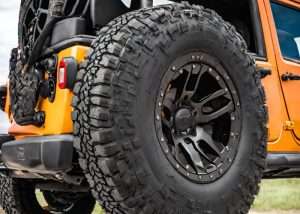
Best Tires for Jeep Wrangler: Top Picks for Off-Road Adventures
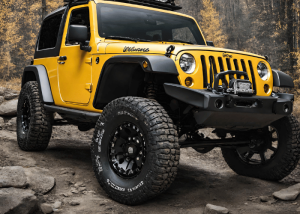
Best Lift Kits for Jeep Wrangler: Top Picks for Off-Road Enthusiasts
Sumitomo vs kumho tires.
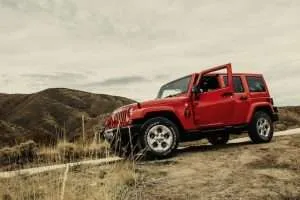
Rancho 5000 vs 9000: Which Suspension System Reigns Supreme?
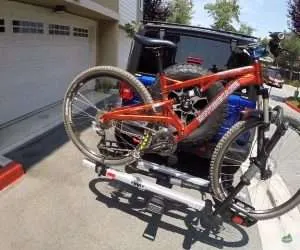
Best Jeep Wrangler Bike Rack Options in 2024
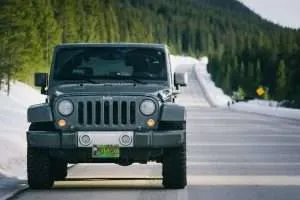
Do Jeeps Break Down a Lot? Here’s What You Need to Know
- Compare Tires
- Latitude Tour HP vs Dueler H/L Alenza
Michelin Latitude Tour HP vs Bridgestone Dueler H/L Alenza
More comparisons with these tires.
- Michelin Defender LTX M/S vs Bridgestone Dueler H/L Alenza
- Cooper Evolution H/T vs Michelin Latitude Tour HP
- Michelin Latitude Tour HP vs Michelin Defender T+H
- Michelin Latitude Tour HP vs Michelin Defender LTX M/S
- Bridgestone Dueler H/P 92A vs Bridgestone Dueler H/L Alenza
- Cooper Evolution H/T vs Bridgestone Dueler H/L Alenza
- Continental CrossContact LX25 vs Bridgestone Dueler H/L Alenza
- Michelin Latitude Tour HP vs Michelin Primacy MXM4
- Michelin Primacy HP vs Michelin Latitude Tour HP
- Michelin LTX A/S vs Bridgestone Dueler H/L Alenza
- Michelin Latitude Tour HP vs BFGoodrich Advantage T/A Sport LT
- Bridgestone Turanza EL440 vs Bridgestone Dueler H/L Alenza
- Goodyear Assurance WeatherReady vs Michelin Latitude Tour HP
- BFGoodrich Advantage T/A Sport LT vs Bridgestone Dueler H/L Alenza
- Pirelli P Zero vs Bridgestone Dueler H/L Alenza
- Michelin Latitude Tour HP vs Yokohama Geolandar H/T G056
- Michelin Latitude Tour HP vs Michelin CrossClimate SUV
- Michelin Latitude Tour HP vs Continental CrossContact LX20 with EcoPlus Technology
- Bridgestone Dueler H/L Alenza vs Kumho Crugen HT51
- Bridgestone Dueler H/L Alenza vs Goodyear Assurance MaxLife
- Michelin Latitude Tour HP vs Michelin Primacy 3
- Michelin Premier LTX vs Michelin Latitude Tour HP
- Michelin Latitude Tour HP vs Continental CrossContact LX25
- Cooper Discoverer SRX vs Michelin Latitude Tour HP
- Michelin Latitude Tour HP vs Michelin CrossClimate
- Michelin Latitude Tour HP vs Toyo Open Country H/T
- Michelin Latitude Tour HP vs Michelin Latitude Tour
- Michelin Latitude Tour HP vs Michelin CrossClimate 2
- Michelin Latitude Tour HP vs Goodyear Assurance MaxLife
- Bridgestone Ecopia H/L 422 Plus vs Michelin Latitude Tour HP
How do we compare tires?
Our database encompasses data on various tire attributes, gathered from public records, tire road tests, online forum assessments, and driver's reviews. This data enables the objective evaluation of tire performance across diverse environments such as dry and wet surfaces, snowy conditions, and off-road scenarios.
Additionally, our comparisons extend to aspects like the brake responsiveness of the tires. Factors such as noise level and ride smoothness are also considered to gauge comfort. Furthermore, our analysis addresses the impact of tire selection on fuel economy, offering insights into how different tires may affect vehicle mileage and fuel efficiency.

IMAGES
VIDEO
COMMENTS
Highlights: Bridgestone Alenza AS Ultra: Excellent wet and dry traction, quiet and comfortable ride, durable construction. Michelin Latitude Tour HP: Superior wet and dry performance, smooth and comfortable ride, long-lasting durability. Differences: Bridgestone is more affordable, Michelin offers premium performance.
Factors such as noise level and ride smoothness are also considered to gauge comfort. Furthermore, our analysis addresses the impact of tire selection on fuel economy, offering insights into how different tires may affect vehicle mileage and fuel efficiency. Which tire is better: compare Bridgestone Alenza AS Ultra vs Michelin Latitude Tour.
Info on Sizes. The Bridgestone Alenza AS Ultra comes in 16 to 21 inches rims, with total of 49 sizes having following specs. Speed ratings: H, V and W. Load ratings: SL, XL. Weight range: 24 to 42 lbs. Tread depth: 10/32″ (or 8mm) on all. UTQG: 680 A A. Treadwear warranty: 80k miles.
It should be mentioned, that the Michelin Latitude Tour faces tough competition from other excellent tires, such as the Continental CrossContact LX25, Pirelli Scorpion Verde All Season Plus II, and Bridgestone Dueler H/L Alenza Plus. Is Michelin Latitude Tour good in snow? The Michelin Latitude Tour tires have fair light snow and ice traction.
Factors such as noise level and ride smoothness are also considered to gauge comfort. Furthermore, our analysis addresses the impact of tire selection on fuel economy, offering insights into how different tires may affect vehicle mileage and fuel efficiency. Which tire is better: compare Bridgestone Alenza AS Ultra vs Michelin Latitude Tour HP.
After putting close to 45K on my Michelin Energy MXV4 S8 which came original on my 2006 RX330, I need to have them replaced. Earlier threads have suggested going with Bridgestone Dueler Alenzas. Tirerack.com has those Alenzas rated pretty good as well. It also has the Michelin Latitude Tour rated...
To really put the Alenza AS Ultra to the test, we chose two of the highest-performing all-around tires available; the Crossover/SUV Touring All-Season CrossContact LX25 and the Grand Touring All-Season Michelin CrossClimate2, and we tested all three head-to-head. Our evaluation used 2019 Audi Q5 2.0T SUVs fitted with new, full tread depth 235 ...
NASHVILLE, Tenn. (Oct. 11, 2021) - Bridgestone Americas (Bridgestone) today announced the launch of the all-new Bridgestone Alenza AS Ultra tire. Delivering an exceptional balance of wet, winter and wear performance, the Bridgestone Alenza AS Ultra tire is the company's most premium highway touring option for drivers looking for a luxury ...
Factors such as noise level and ride smoothness are also considered to gauge comfort. Furthermore, our analysis addresses the impact of tire selection on fuel economy, offering insights into how different tires may affect vehicle mileage and fuel efficiency. Which tire is better: compare Michelin Latitude Tour vs Bridgestone Dueler H/L Alenza.
In contrast, the Bridgestone Alenza AS Ultra is the more reliable and well-rounded alternative for SUV and 4×4 owners seeking improved performance and longevity, while the Michelin Latitude Tour HP shines in dry traction but falls short in many critical characteristics. Michelin Latitude Tour HP Tire vs. Pirelli Scorpion Verde All Season
The Michelin Latitude Tour is an excellent touring tire for owners of crossovers and SUVs, it provides the driver with safe traction on dry and wet surfaces, good treadlife, and outstanding comfort. ... for the price, you can get even better treadlife in the Bridgestone Dueler Alenza Plus (an 80,000-mile treadwear warranty), and Continental ...
The Bridgestone takes the stress of potholes or debris without disturbing you. Customers don't appear to be blown away by the comfort level yet. On the other hand, the Michelin provides a comfortable ride, thanks to its soft and supple tires. It has excellent shock absorption when driving over minor debris or potholes.
A head-to-head comparison of the Alenza 001 vs the Latitude Tour is also one of many rivalries between Bridgestone and Michelin brands. So, let's have a look at the Bridgestone Alenza 001 vs Michelin Latitude Tour in-depth comparison, which is going to help you along the line to pick the perfect fit for your car.
Michelin Latitude Tour HP - Great all-round tire with winter performance defect; ... Bridgestone Alenza AS Ultra - Offers longer tread life but slightly worse winter performance; Performance Tires. Potenza R980+ extremely commutative tire. The tires in this segment are mostly used on sport utility vehicles. Unlike all-season tires, these ...
In summary, while both Bridgestone Alenza AS Ultra and Michelin Defender LTX tires offer warranties against defects in materials and workmanship, they differ in terms of treadwear warranties. Bridgestone provides a 70,000-mile treadwear warranty while Michelin offers an 80,000-mile treadwear warranty.
Factors such as noise level and ride smoothness are also considered to gauge comfort. Furthermore, our analysis addresses the impact of tire selection on fuel economy, offering insights into how different tires may affect vehicle mileage and fuel efficiency. Which tire is better: compare Bridgestone Alenza AS Ultra vs Michelin Latitude Tour HP ZP.
Bridgestone offers the tire with an 80,000-mile treadwear warranty, while the Defender LTX M/S comes with a 70,000-mile warranty. Keep in mind that this is for the T and H-rated models, and the R-rated ones come with 60,000 miles of warranty. Winner: Bridgestone Alenza AS Ultra.
Highlights: Bridgestone Alenza: Excellent traction on wet and dry roads, long-lasting tread life, quiet and comfortable ride. Michelin Defender: Long-lasting tread life, excellent traction on wet and dry surfaces, good fuel efficiency. Differences: Bridgestone Alenza is more budget-friendly, while Michelin Defender justifies its higher price ...
Michelin Latitude Tour vs Goodyear Assurance MaxLife. Bridgestone Dueler H/L Alenza Plus vs Michelin LTX A/T 2. Bridgestone Dueler H/L Alenza Plus vs Kumho Crugen HT51. Bridgestone Dueler H/L Alenza Plus vs Toyo Open Country H/T. Bridgestone Dueler H/L Alenza Plus vs Yokohama Geolandar H/T G056.
Factors such as noise level and ride smoothness are also considered to gauge comfort. Furthermore, our analysis addresses the impact of tire selection on fuel economy, offering insights into how different tires may affect vehicle mileage and fuel efficiency. Which tire is better: compare Bridgestone Alenza 001 vs Michelin Latitude Tour.
The Bridgestone Alenza AS Ultra offers premium features at a slightly higher price point, while the Michelin Defender provides reliable performance at a more budget-friendly cost. Ultimately, your decision should be based on your specific needs and preferences as well as your budget constraints.
Price-wise, Michelin isn't the leader. Bridgestone offers a more wallet-friendly choice. Looking at an 18-inch model, the difference is about $15 - not a huge amount, but worth noting. Although the size and load ratings match, the Defender LTX M/S falls short on speed rating compared to the Alenza AS Ultra.
Factors such as noise level and ride smoothness are also considered to gauge comfort. Furthermore, our analysis addresses the impact of tire selection on fuel economy, offering insights into how different tires may affect vehicle mileage and fuel efficiency. Which tire is better: compare Bridgestone Dueler H/L Alenza vs Michelin Latitude Tour HP.